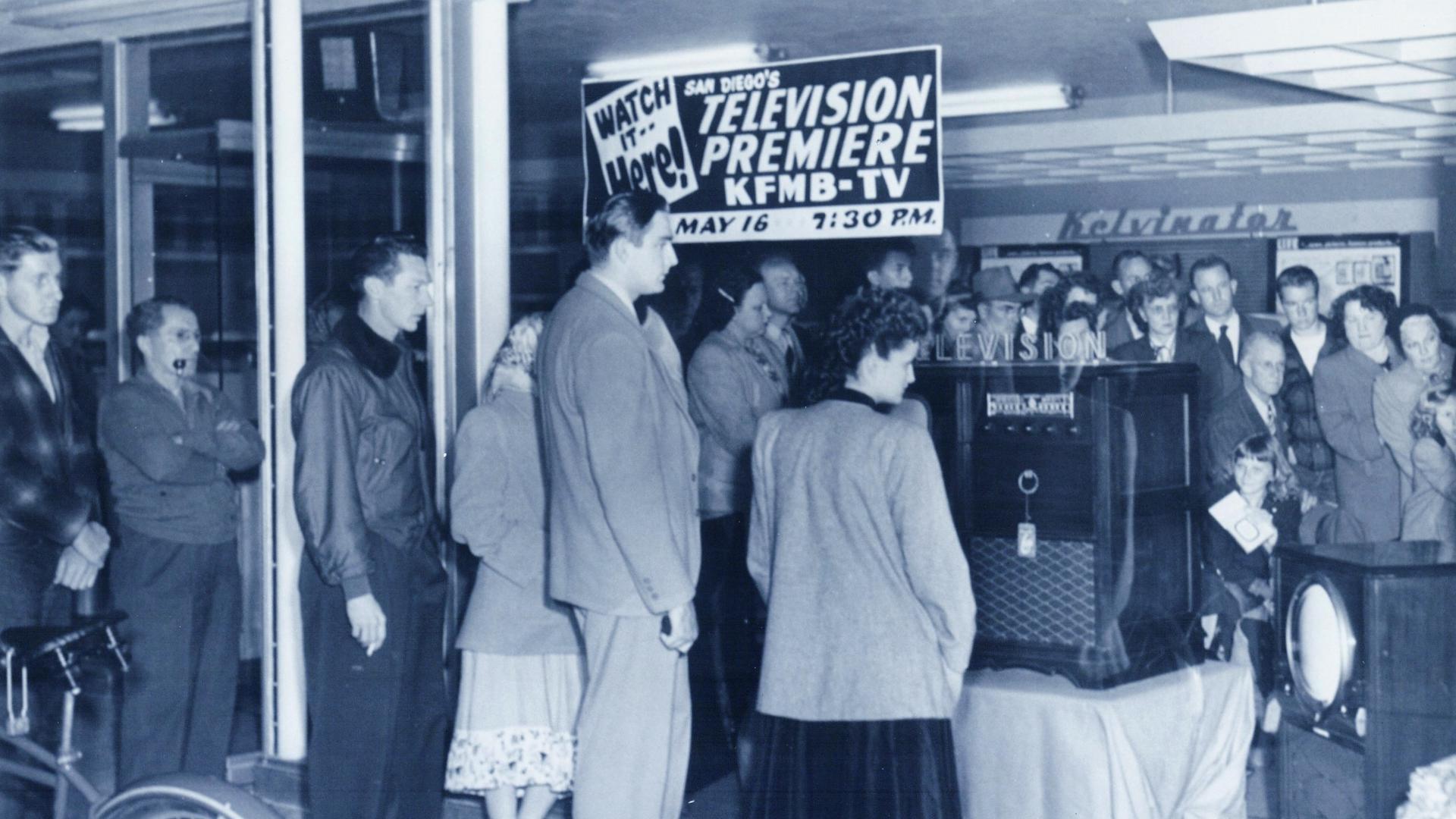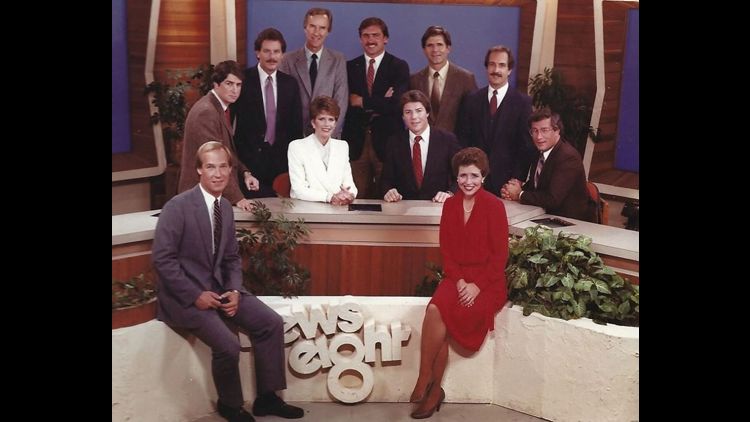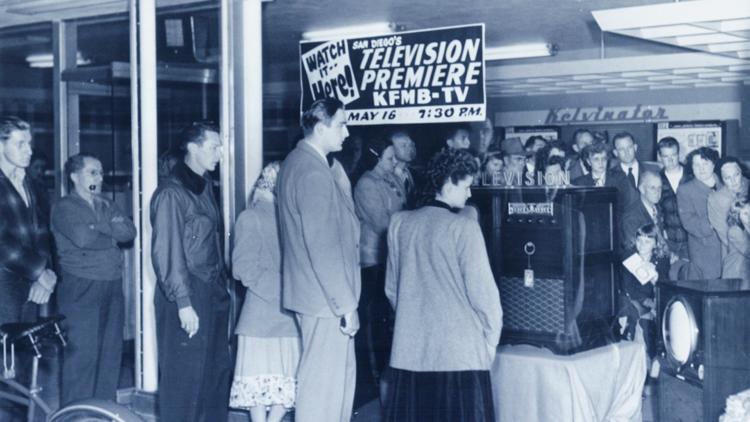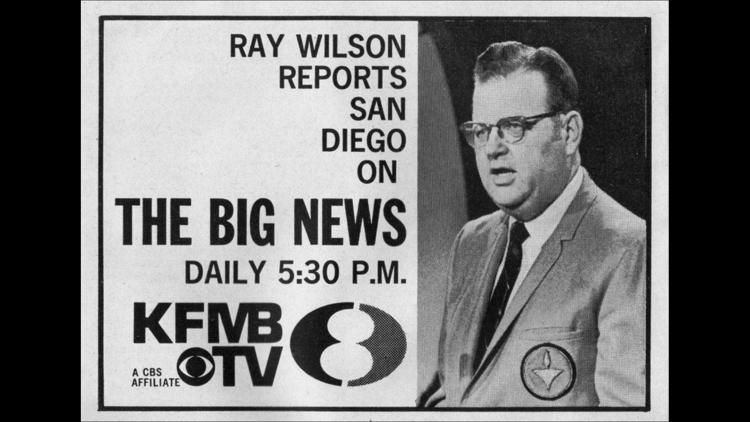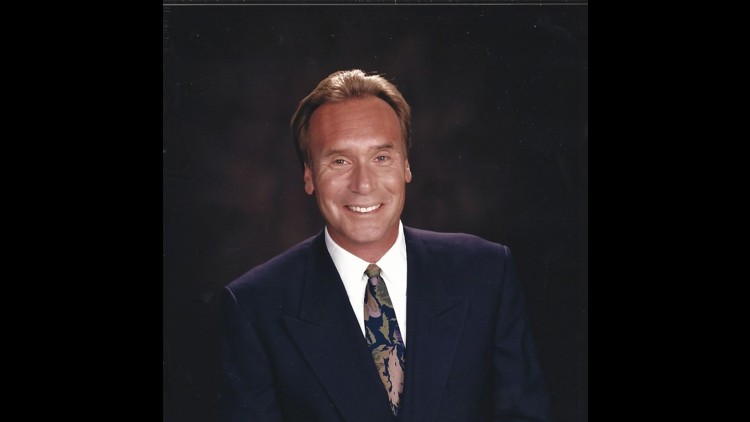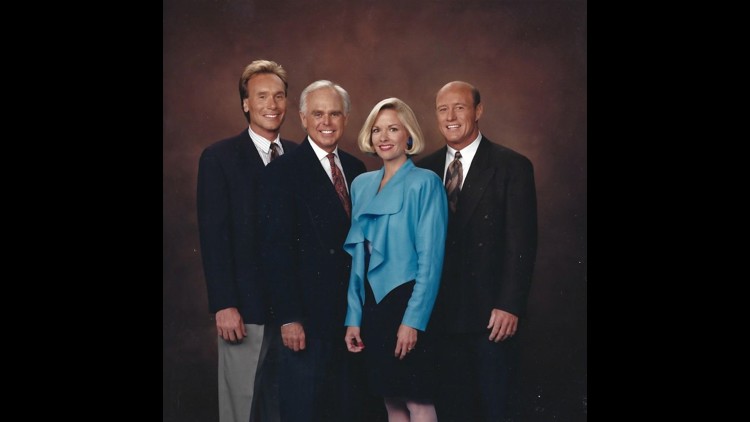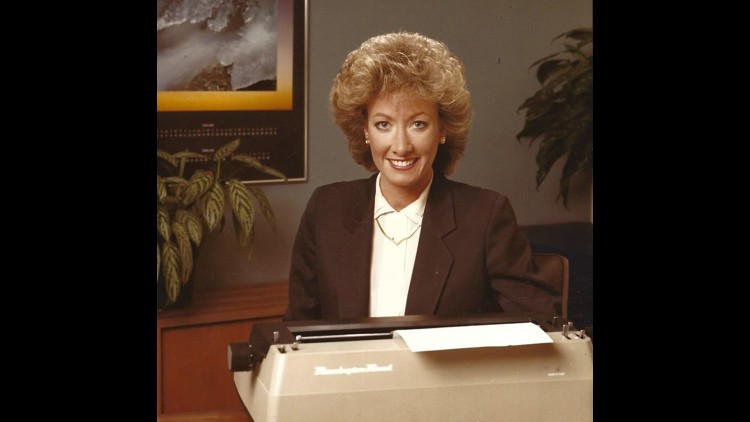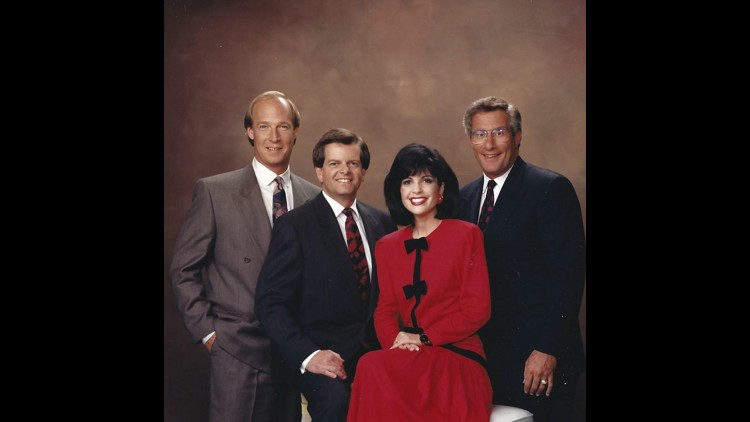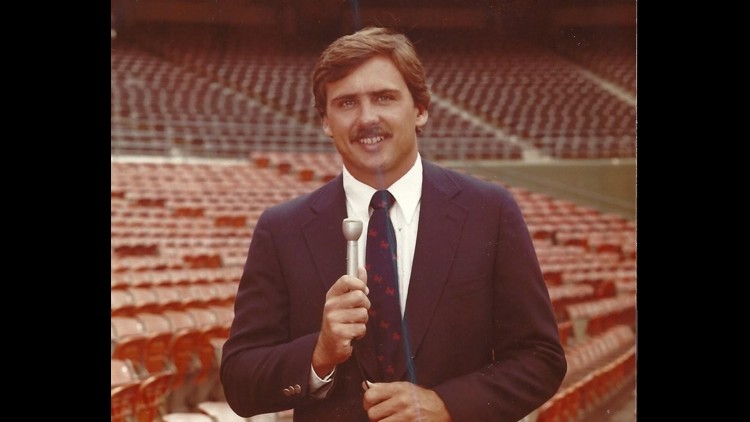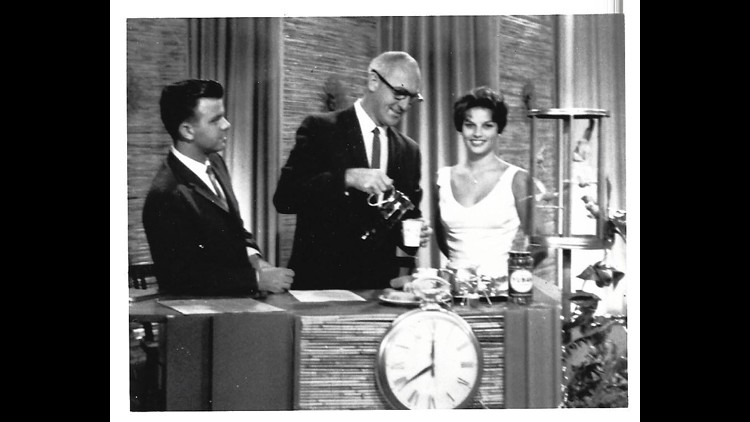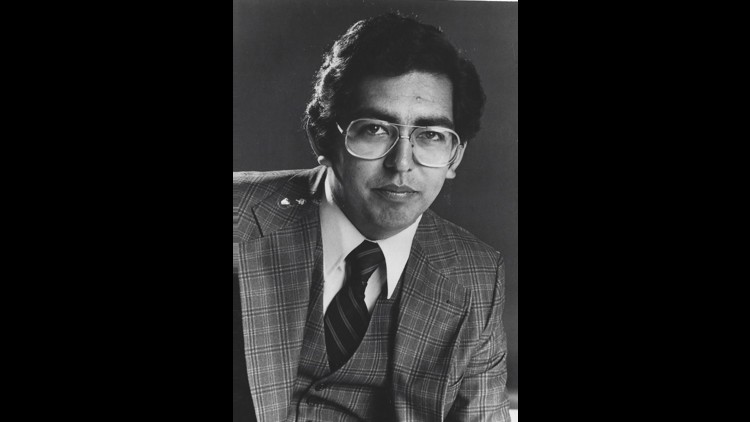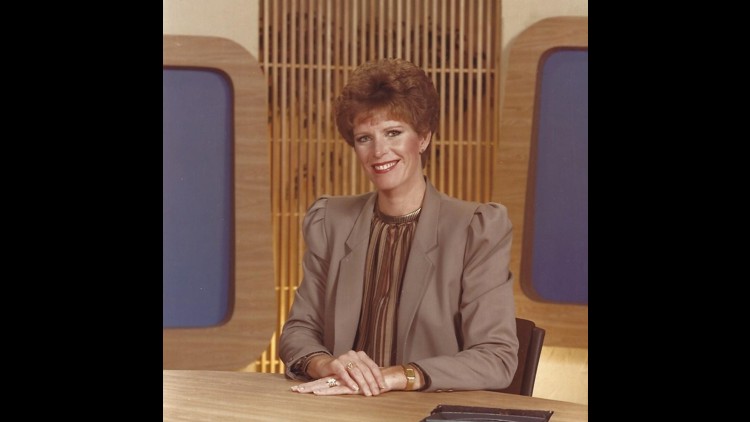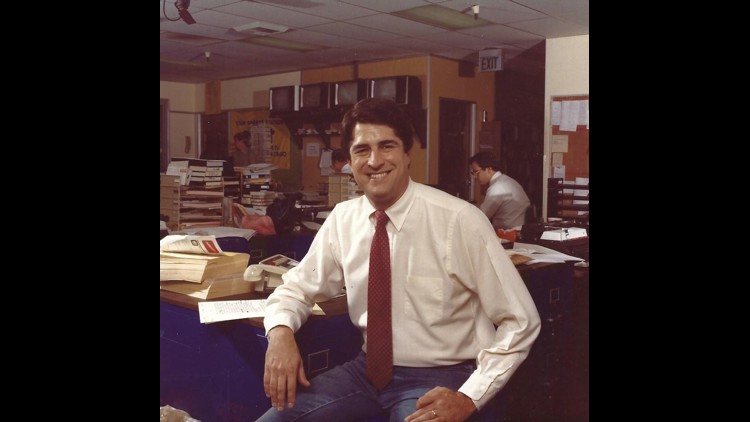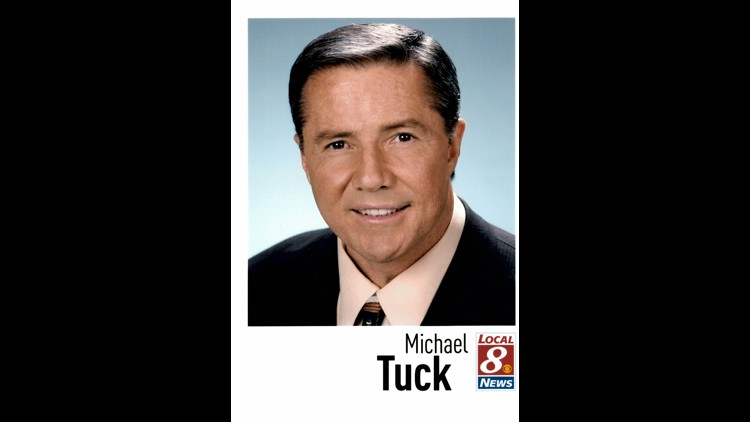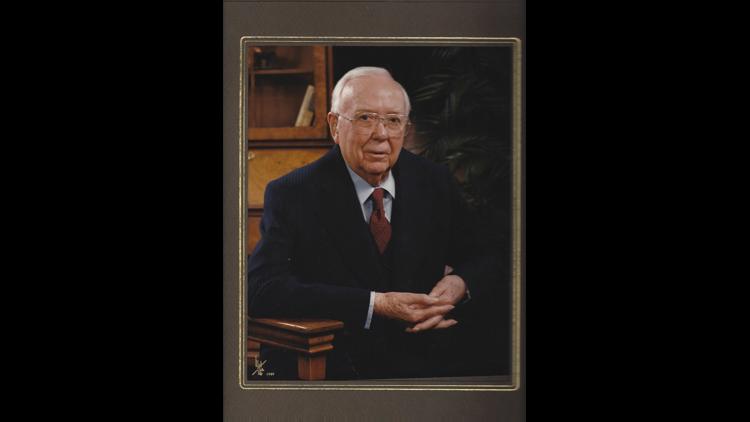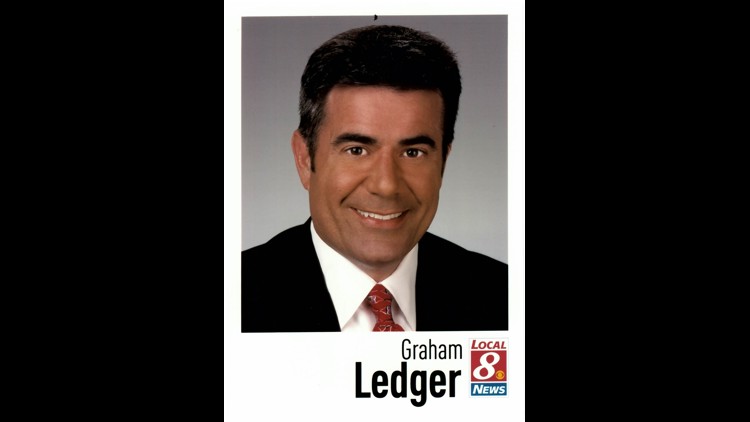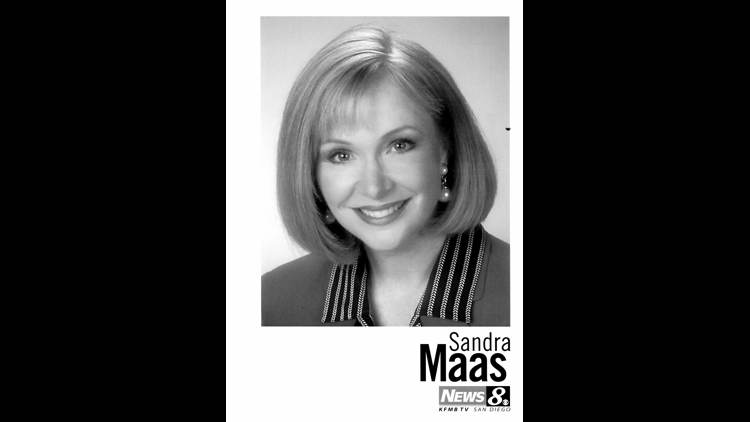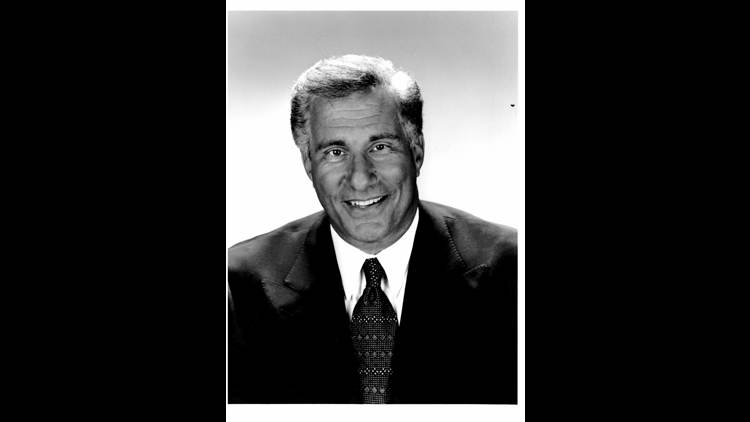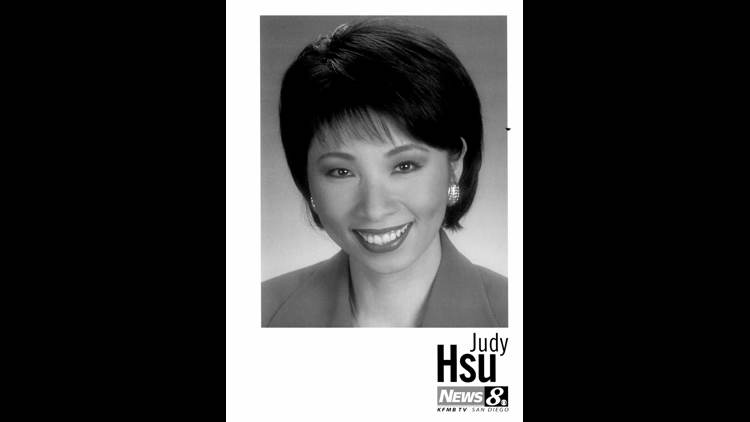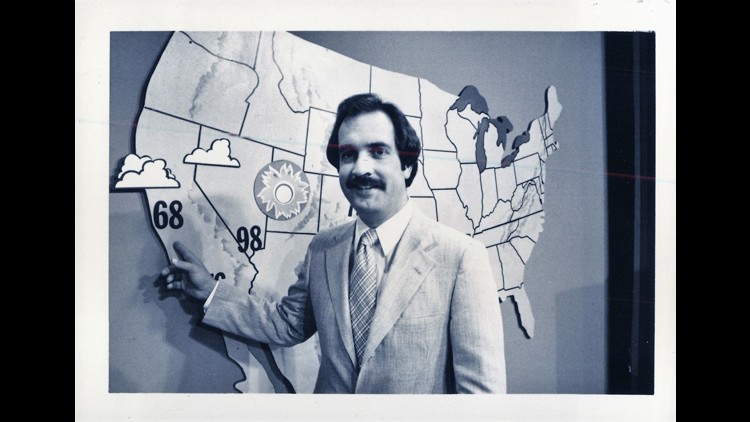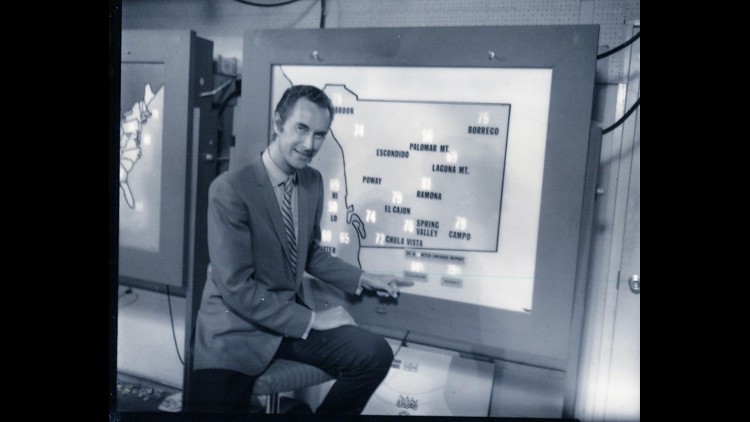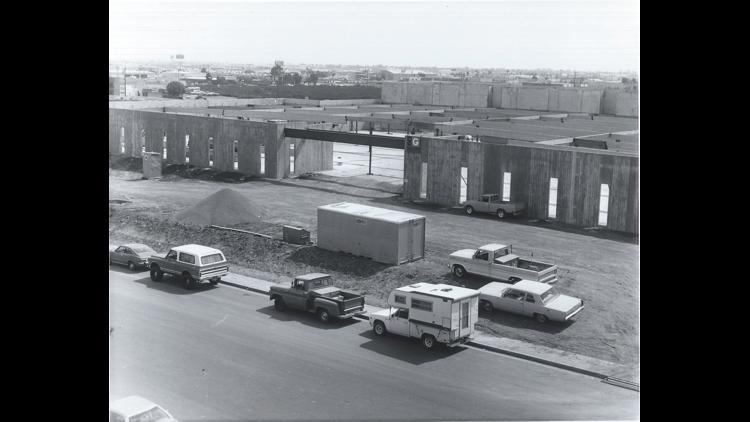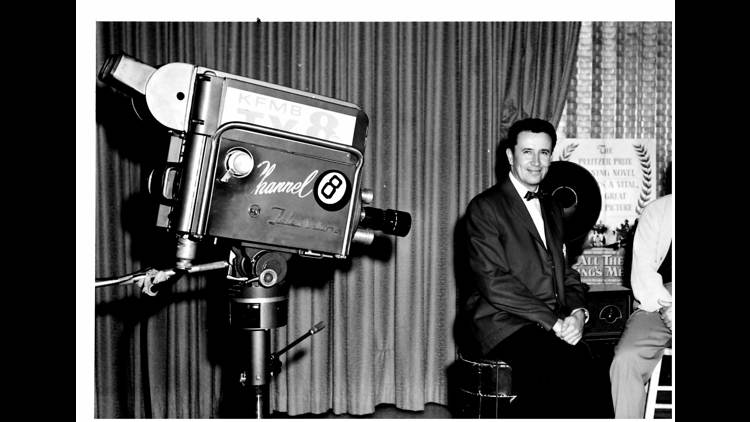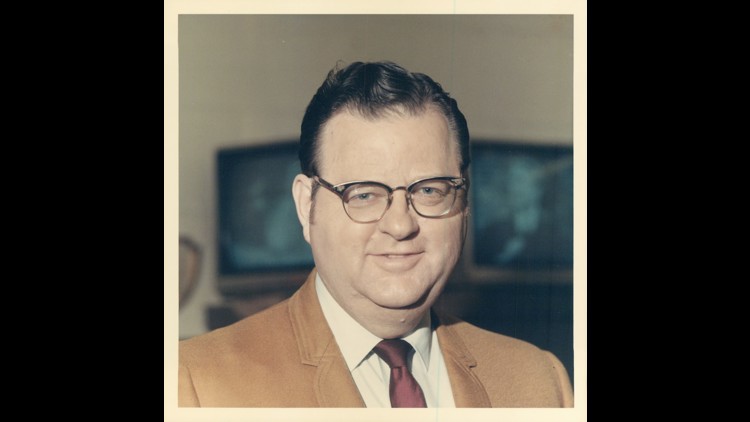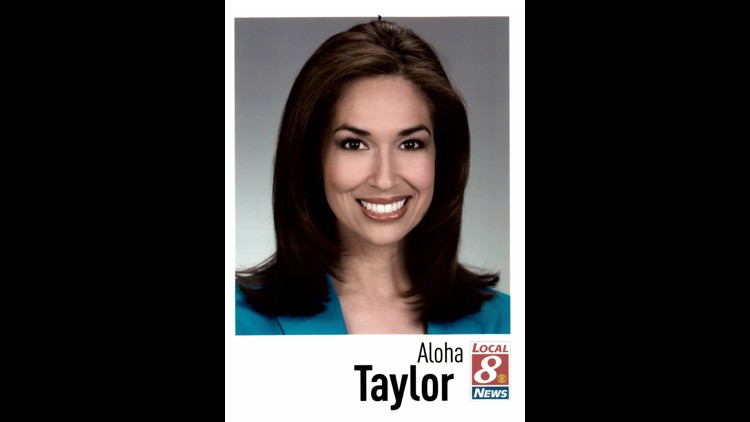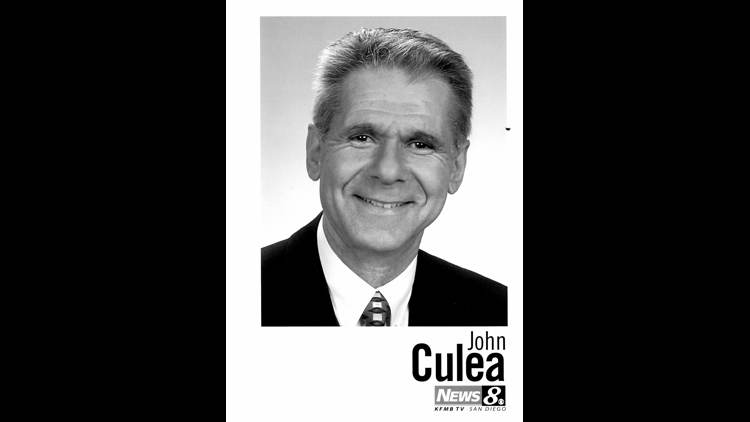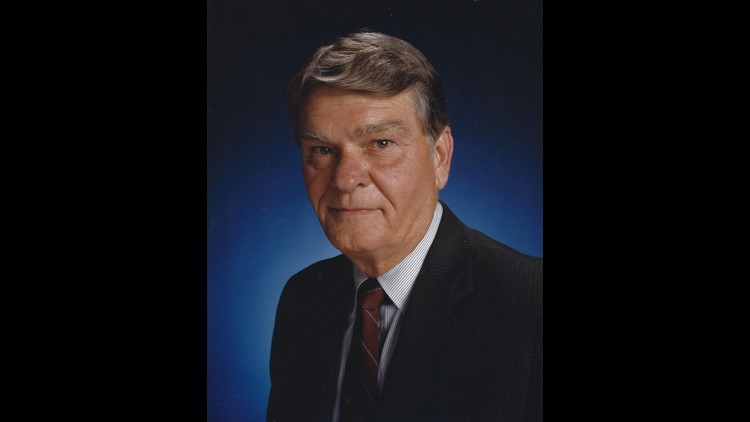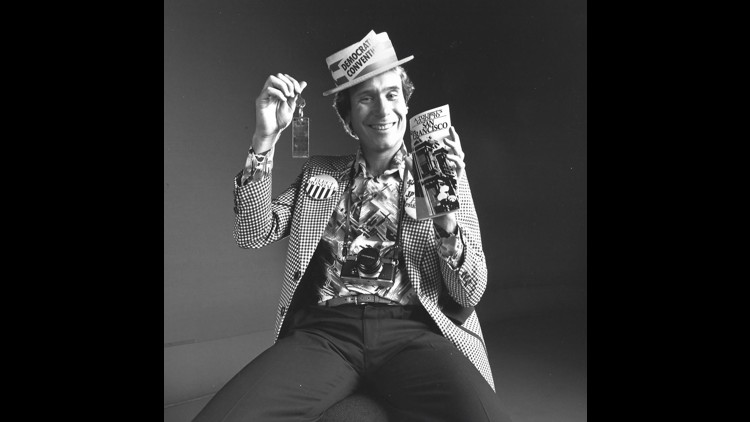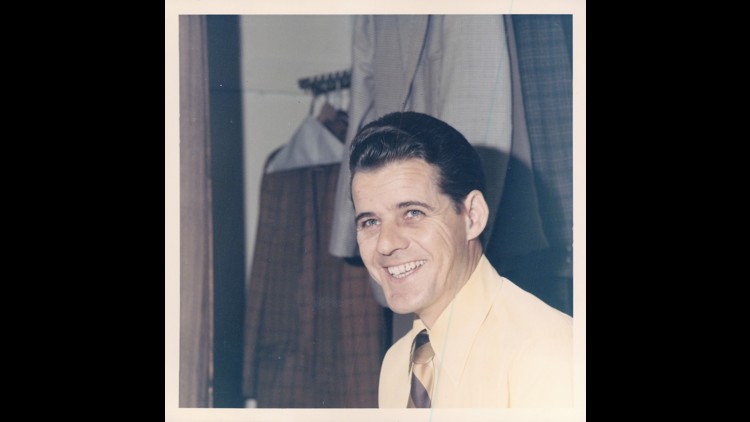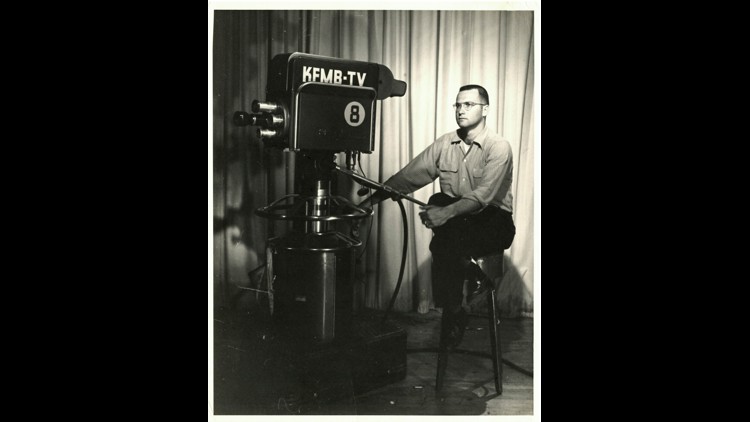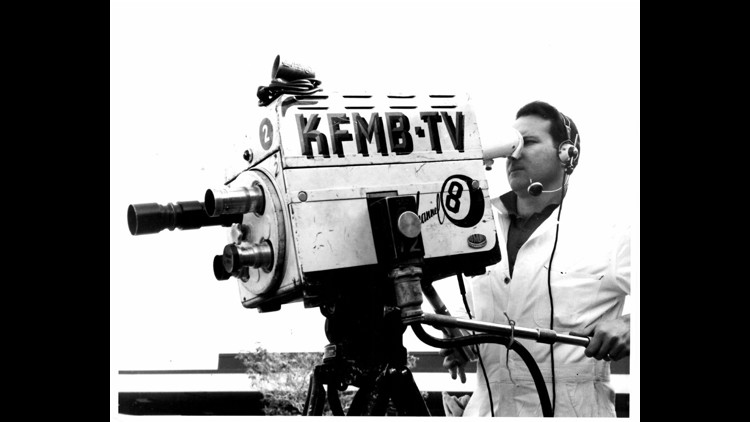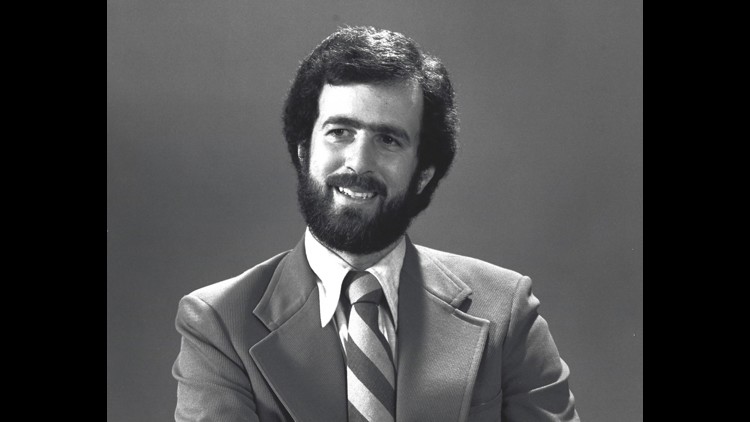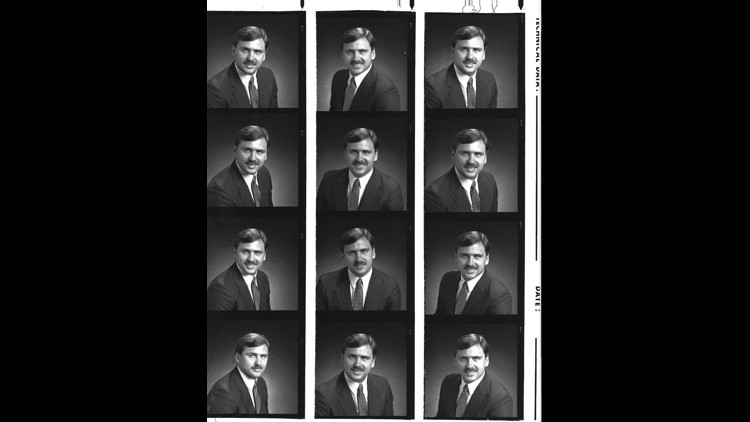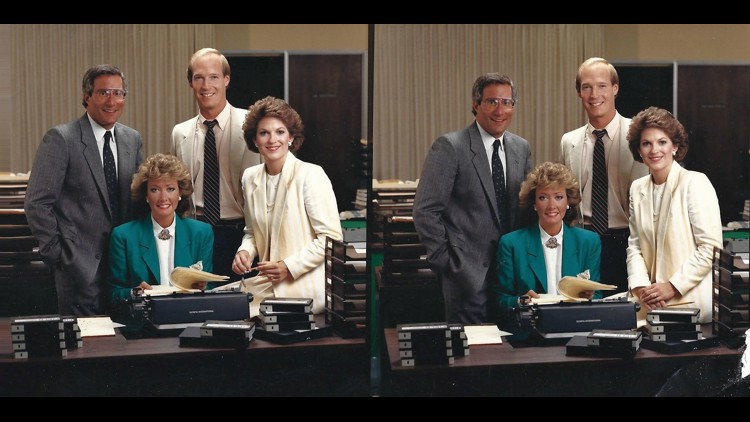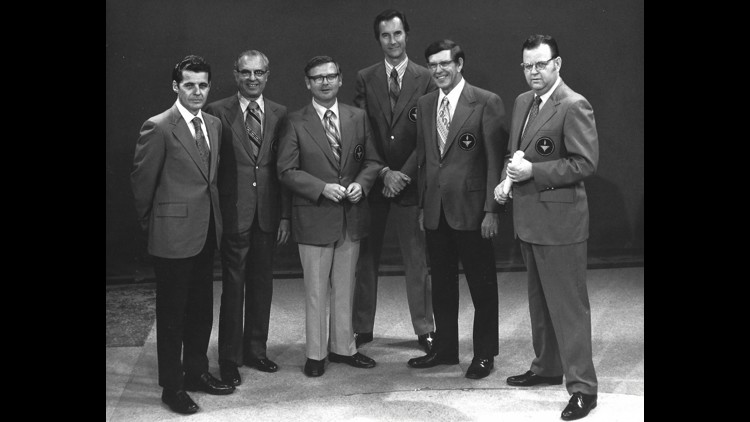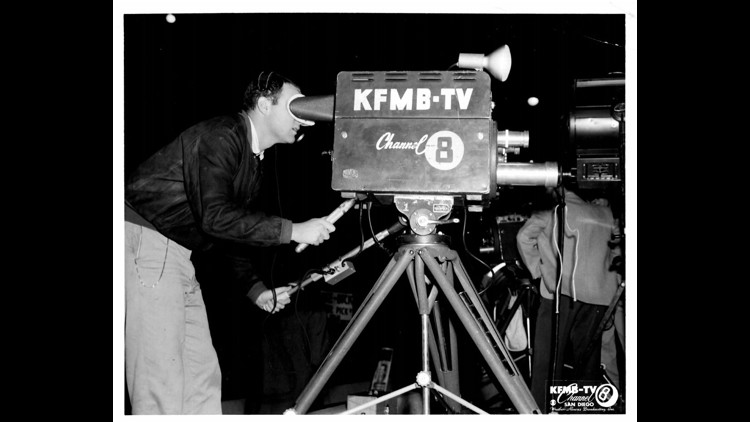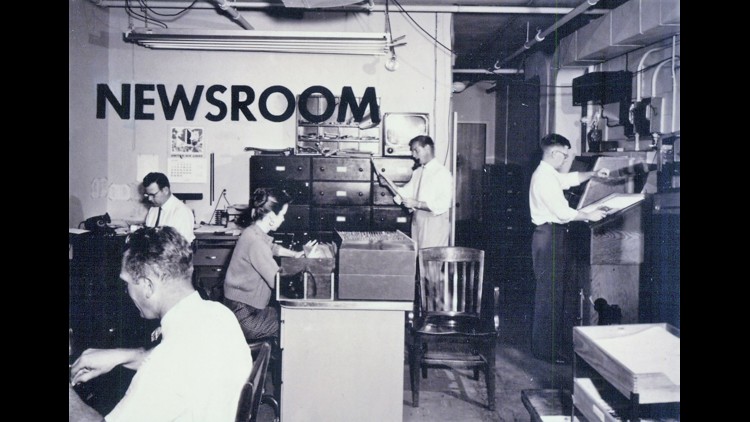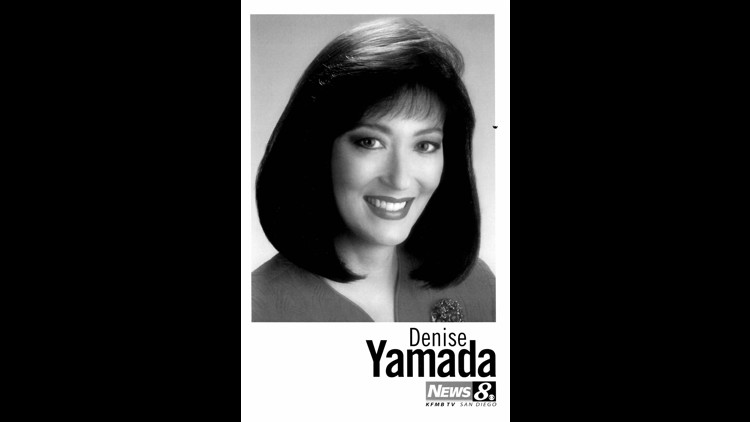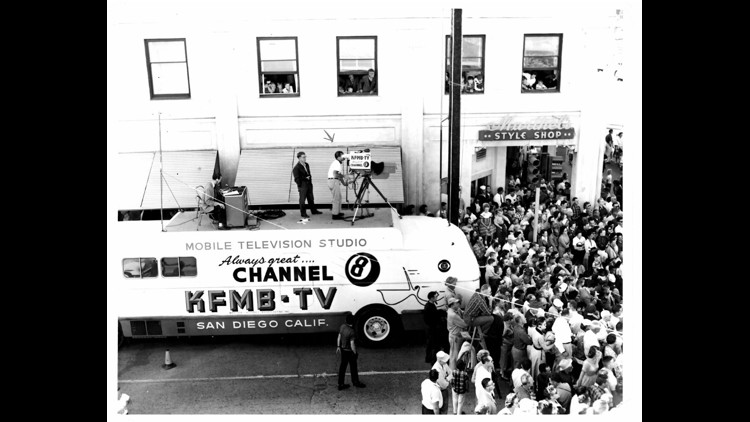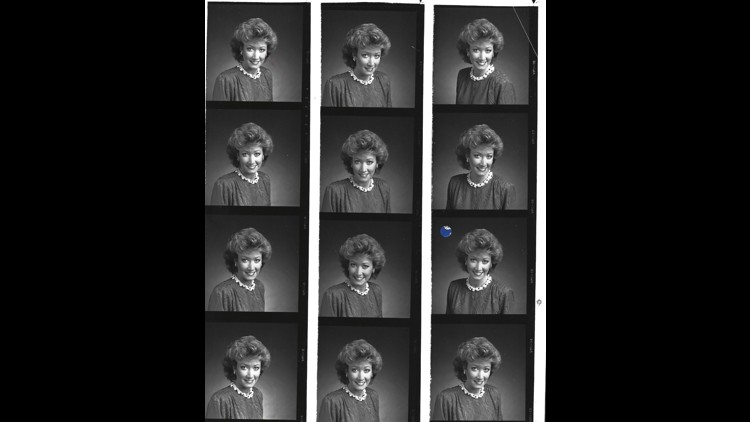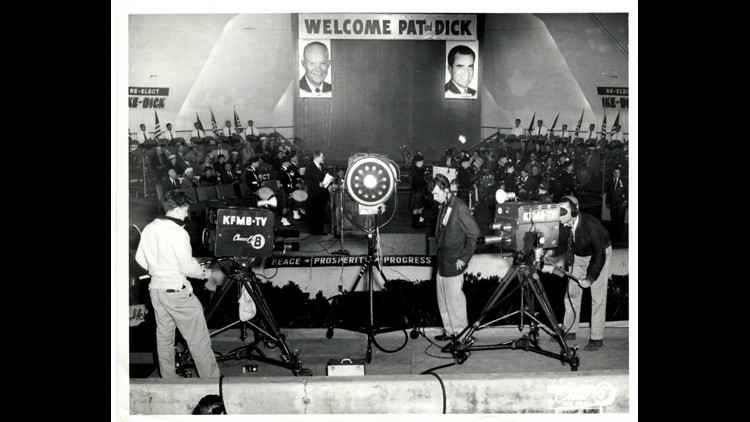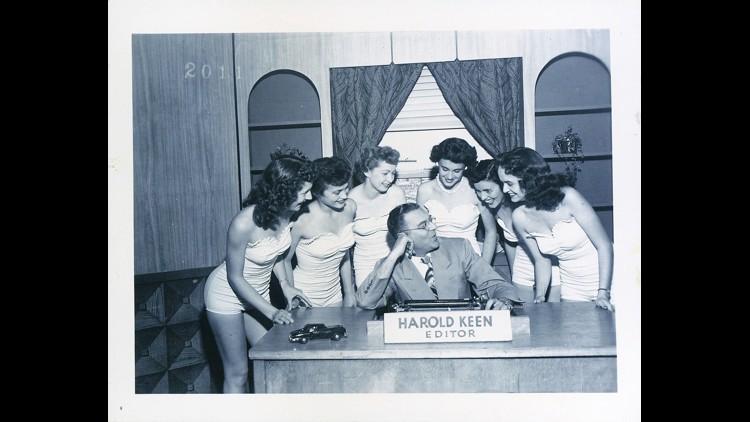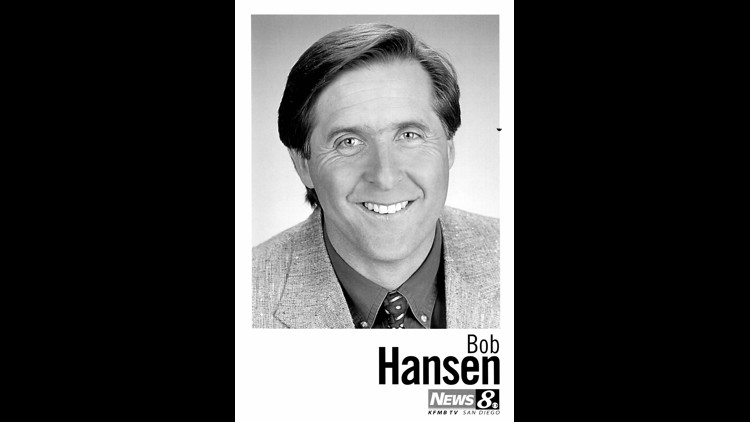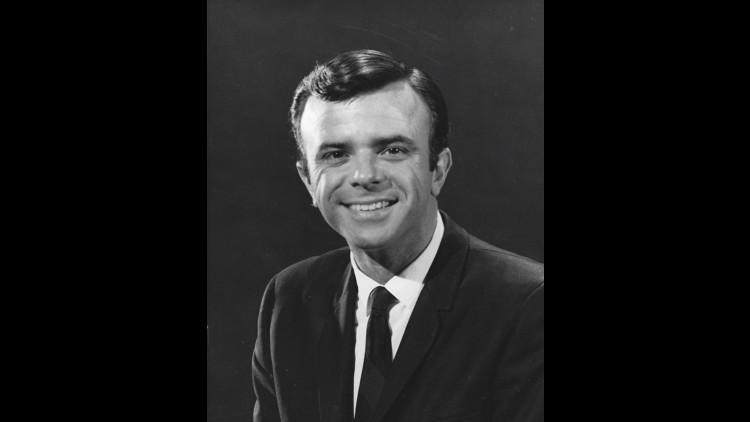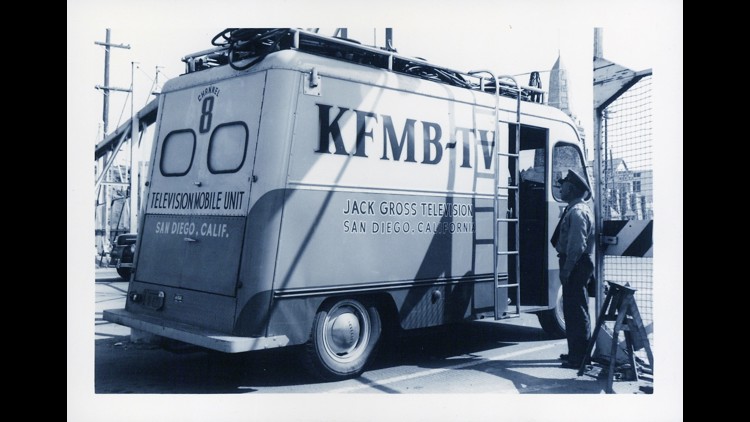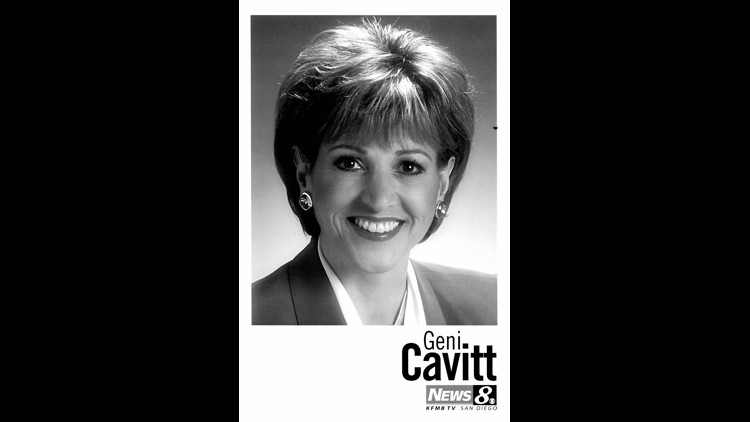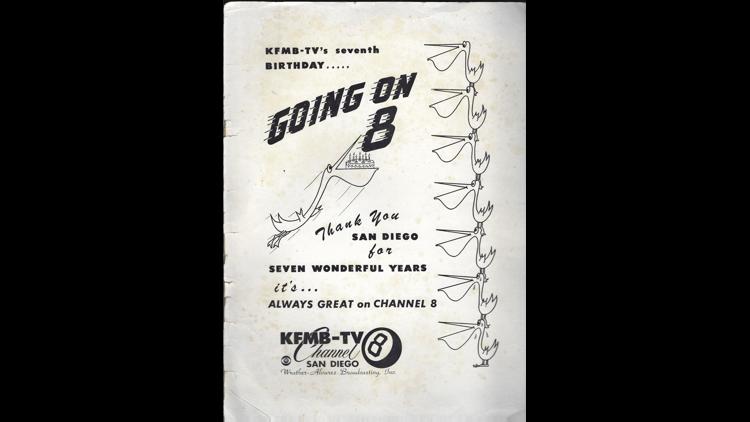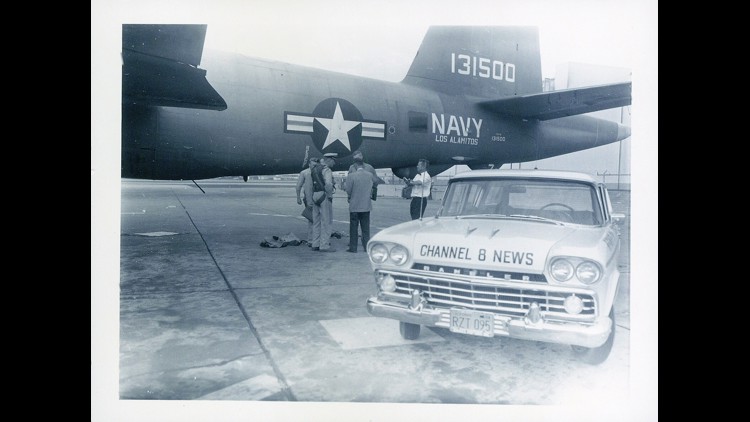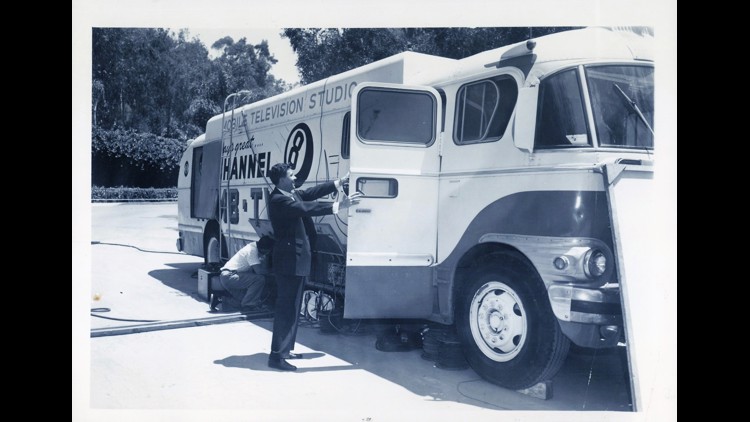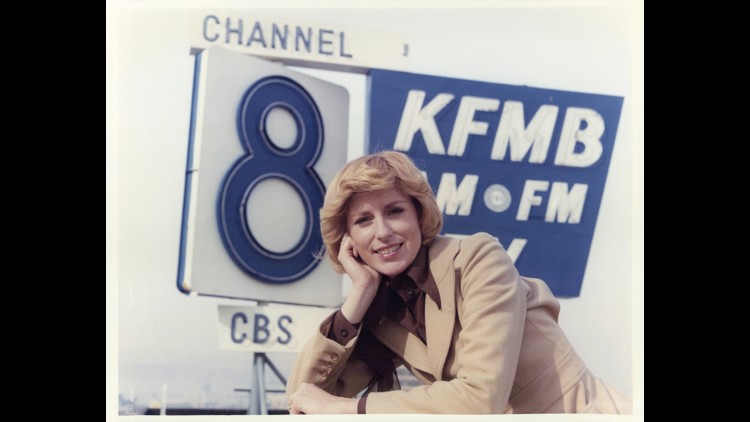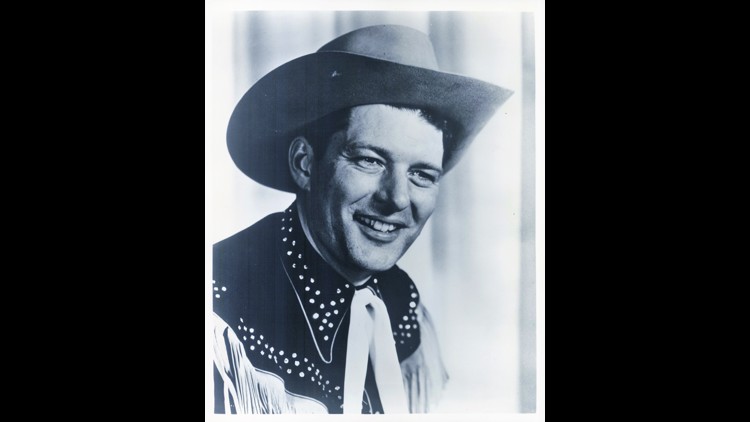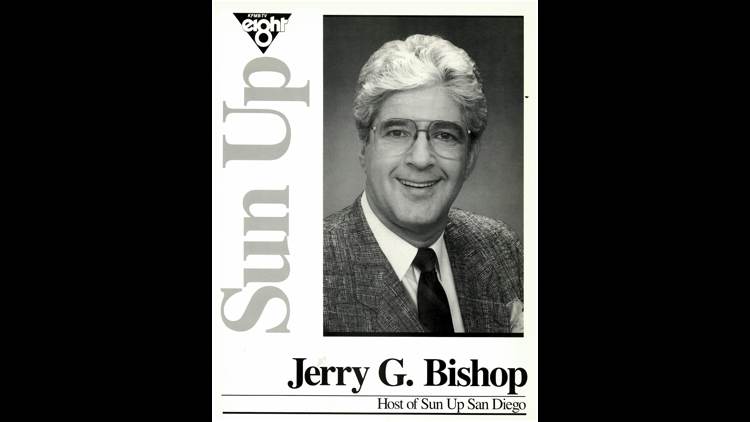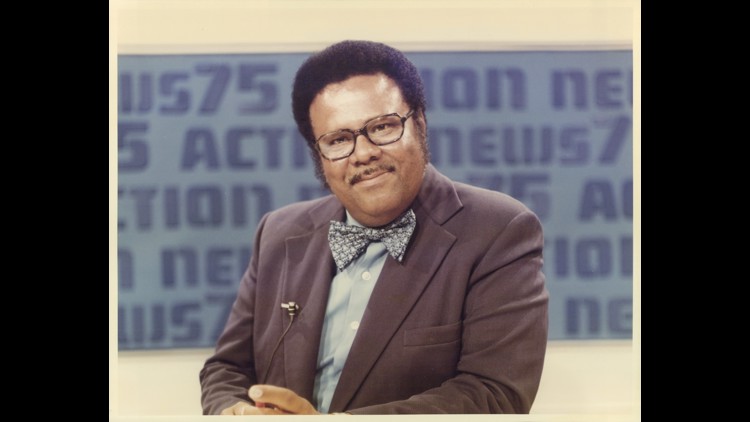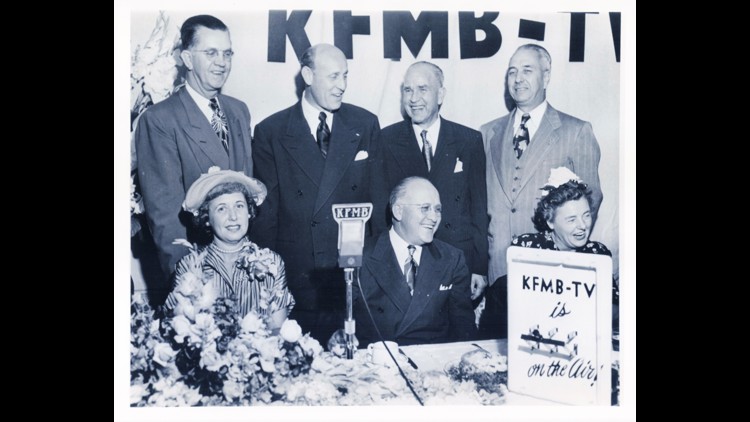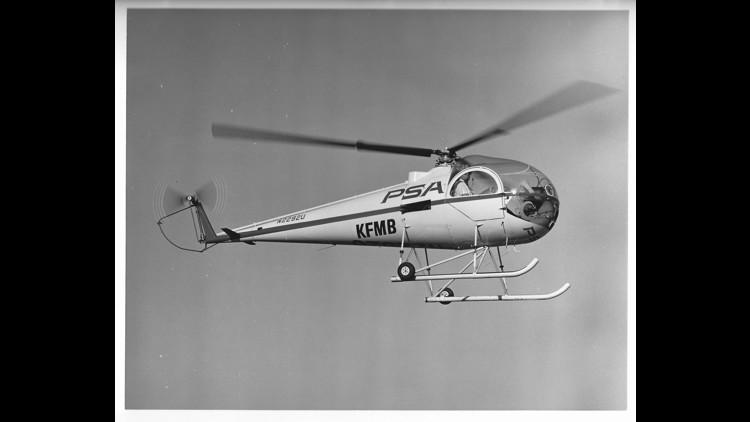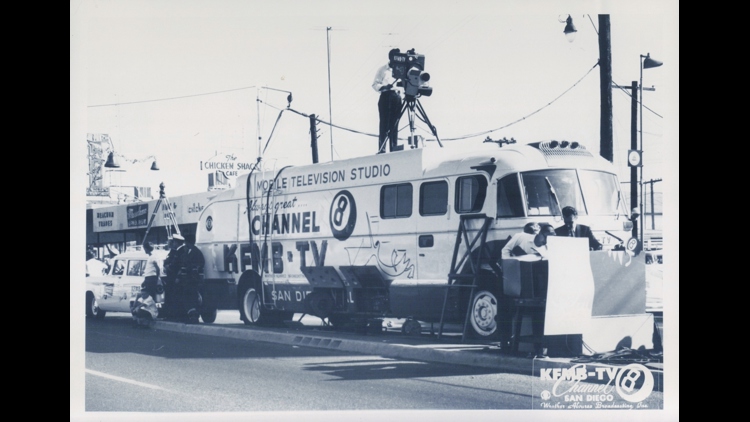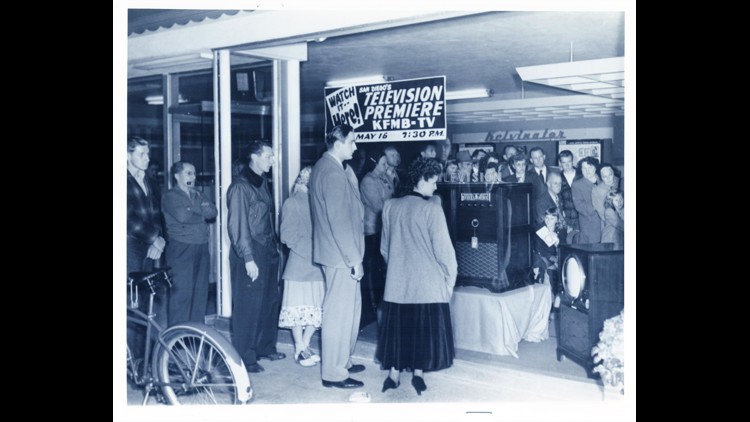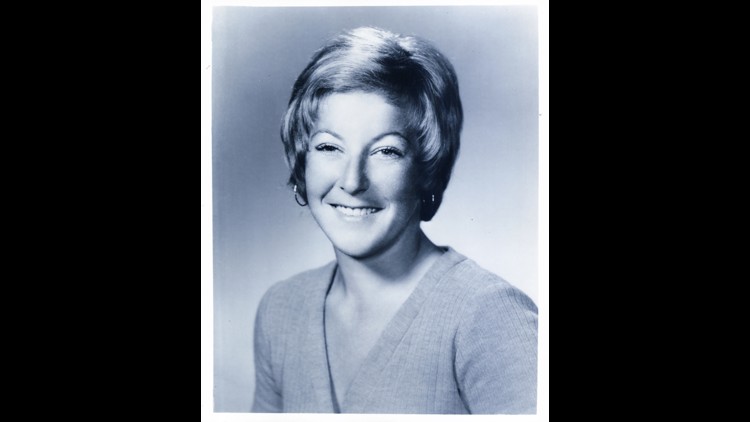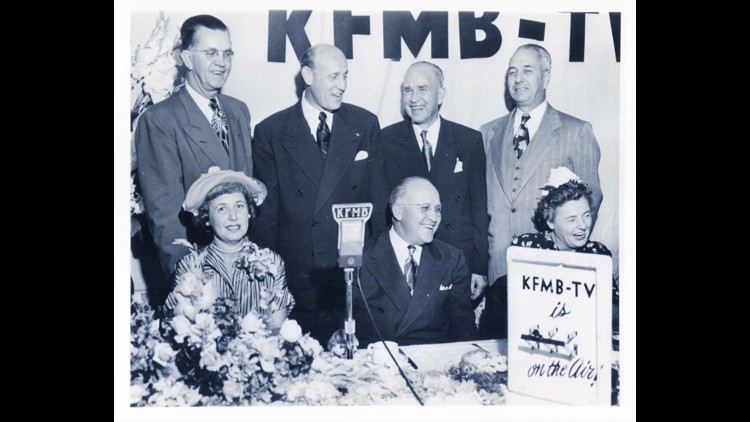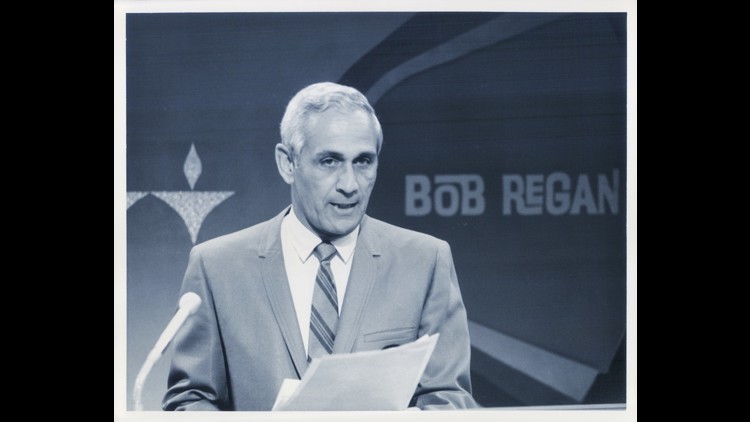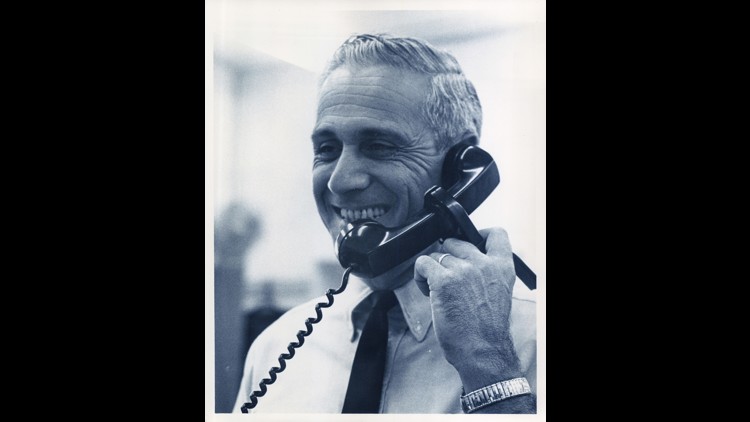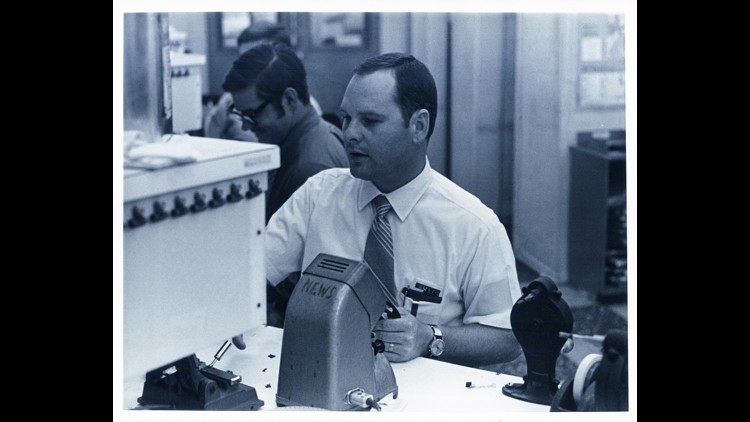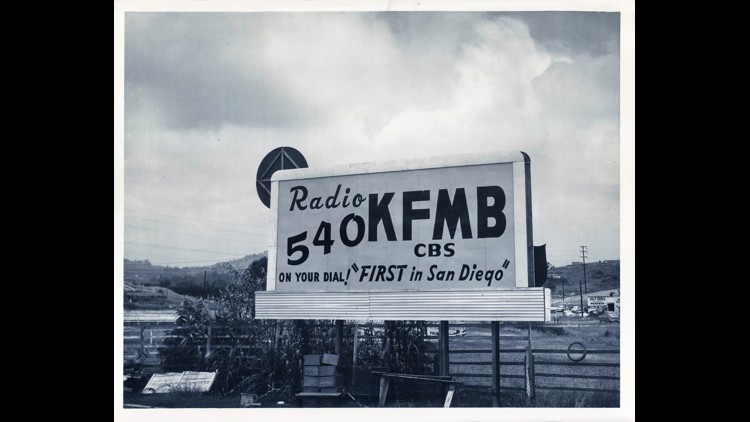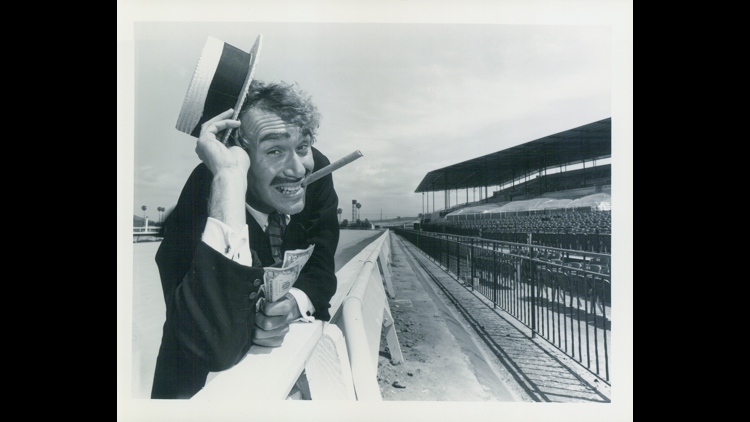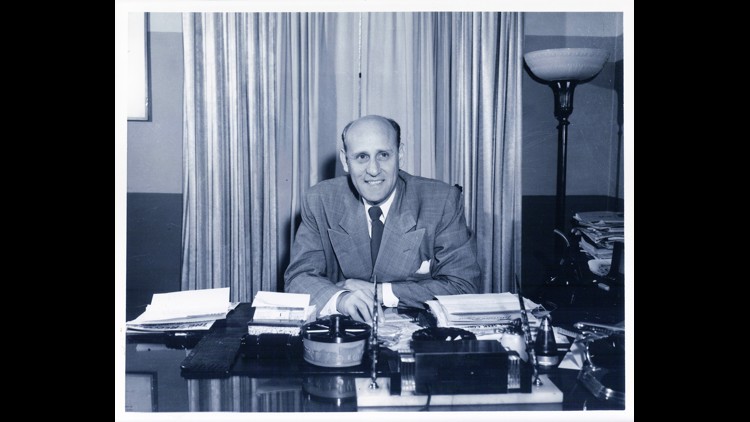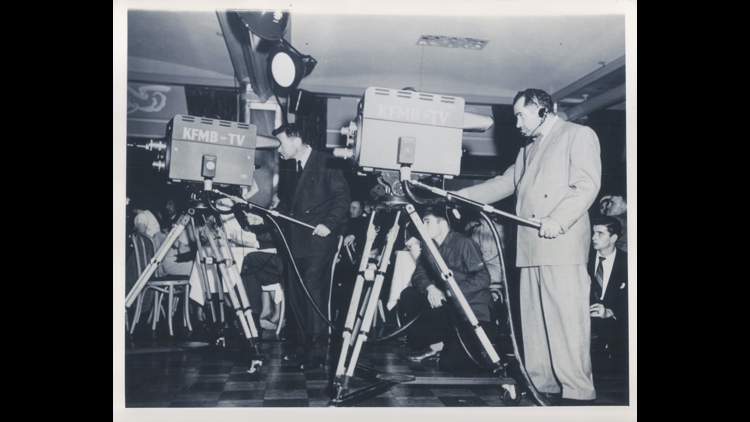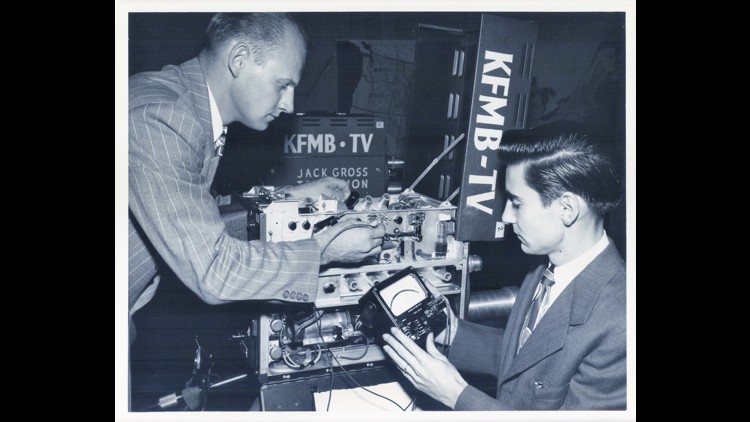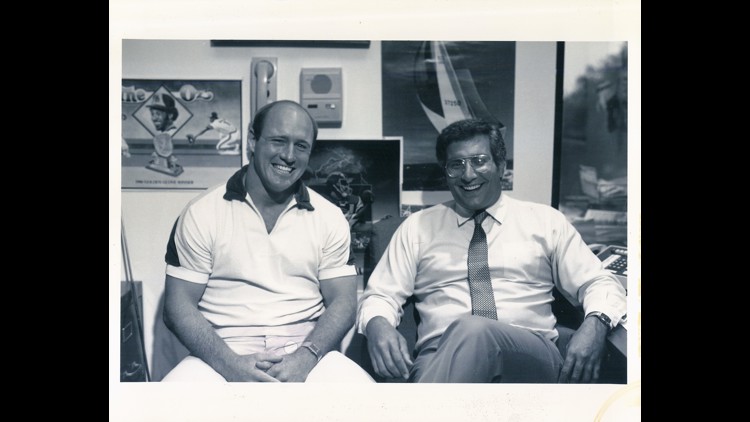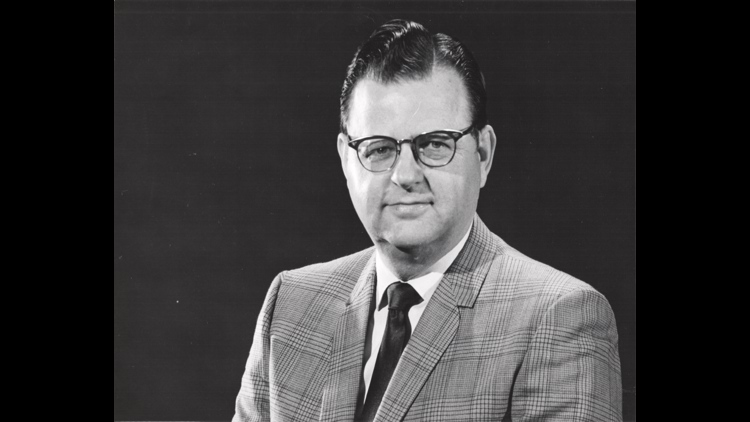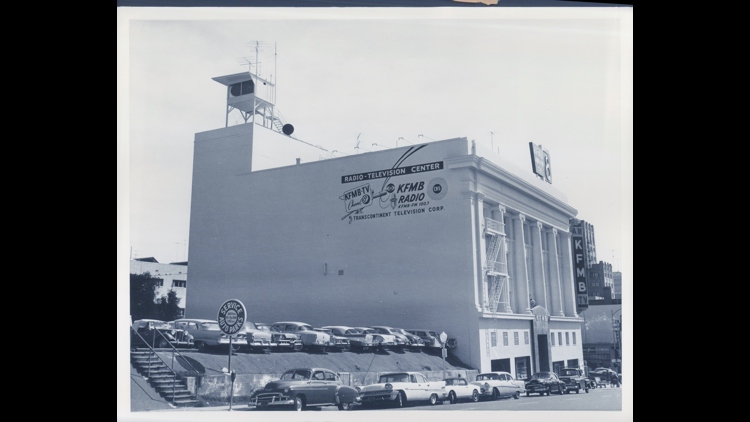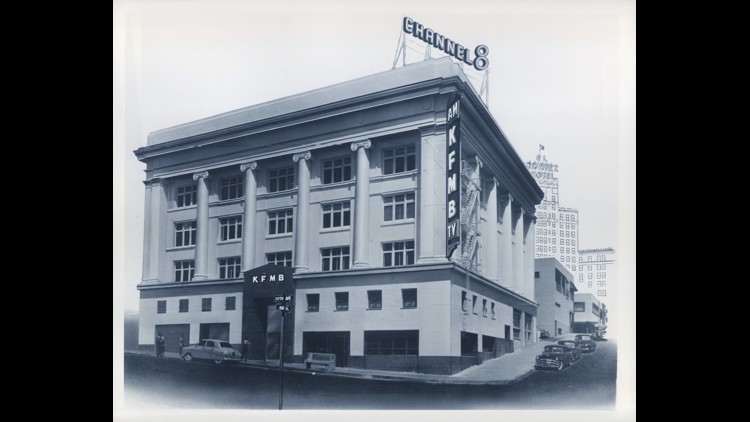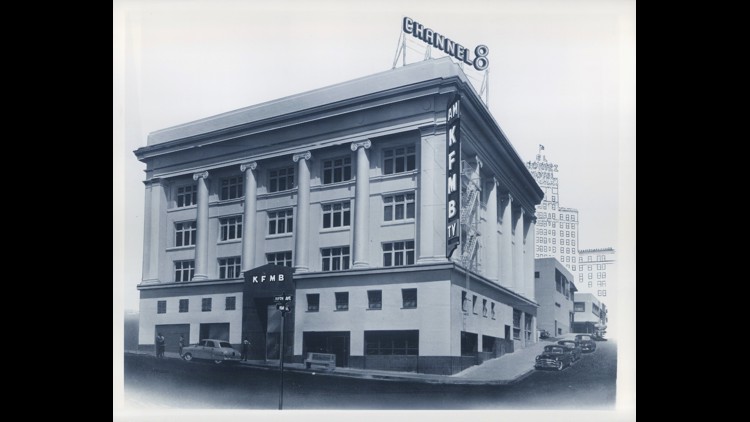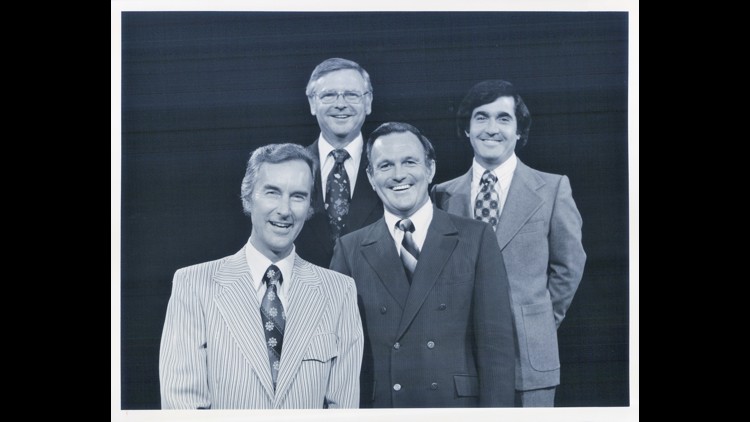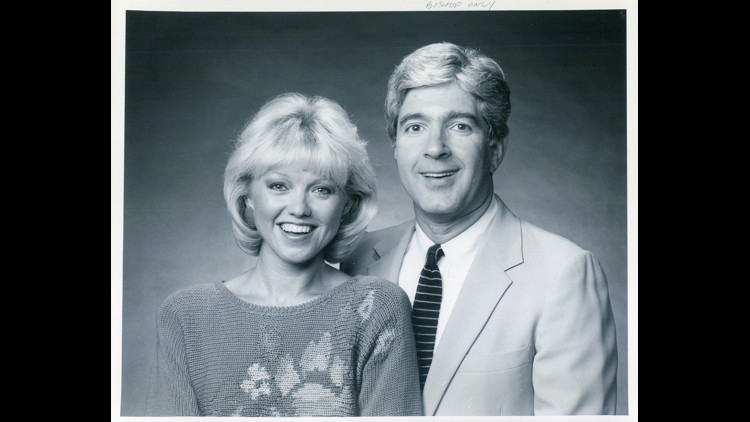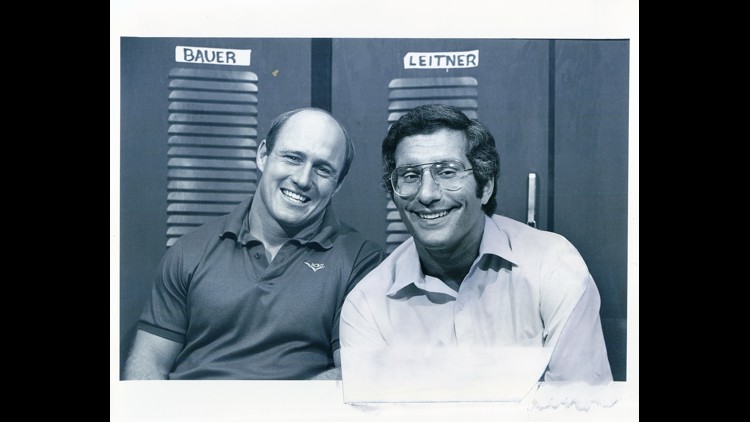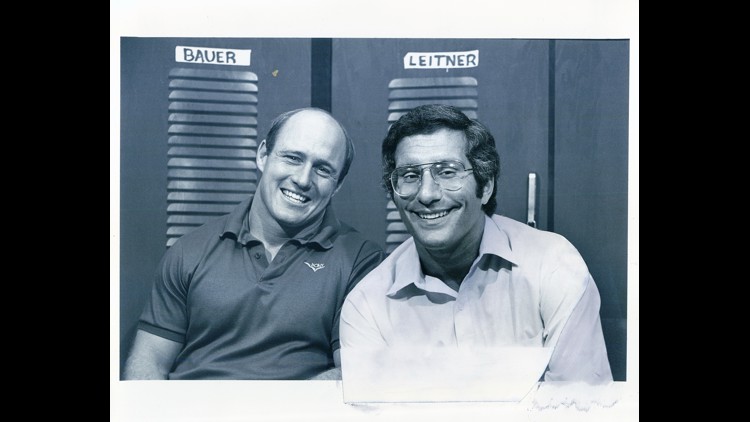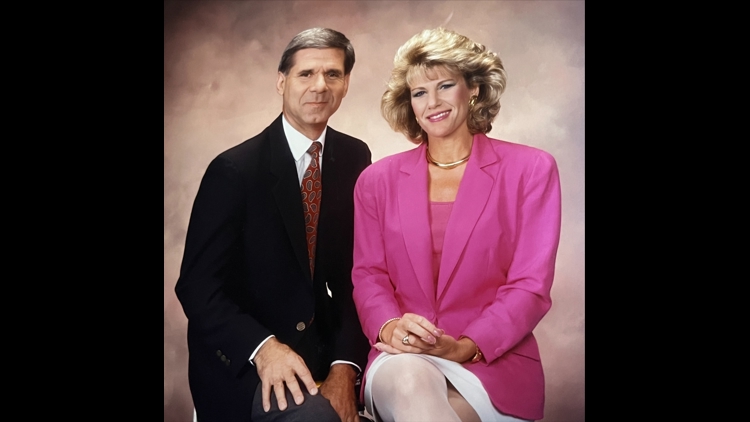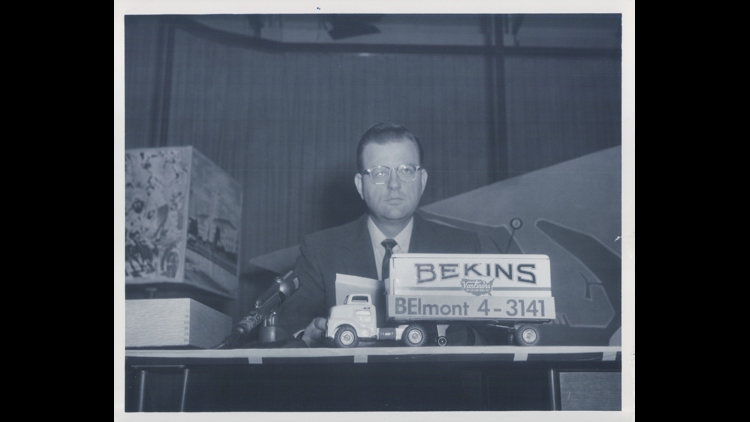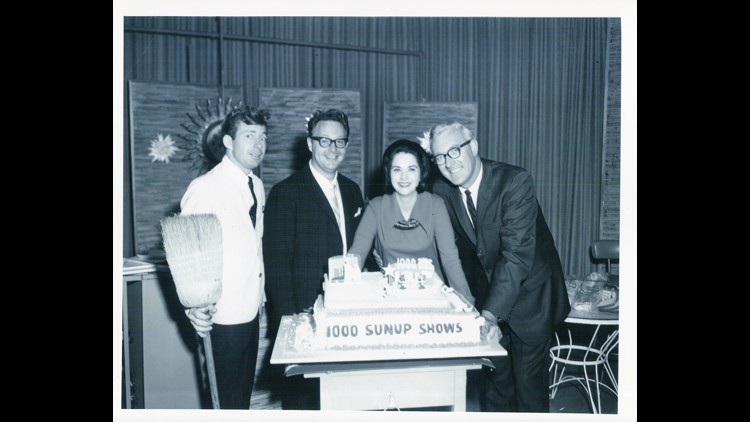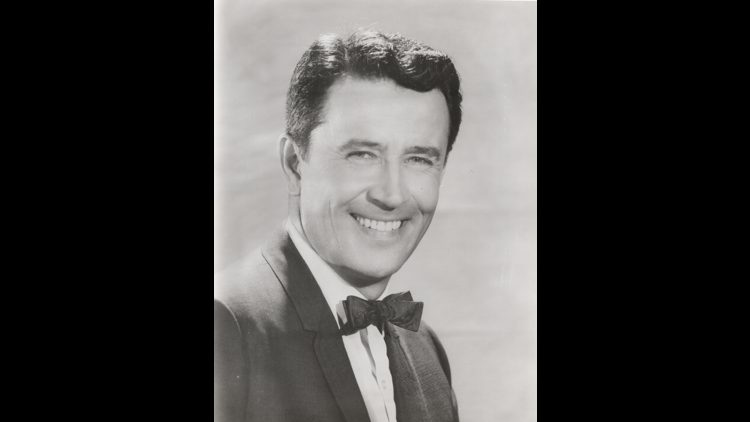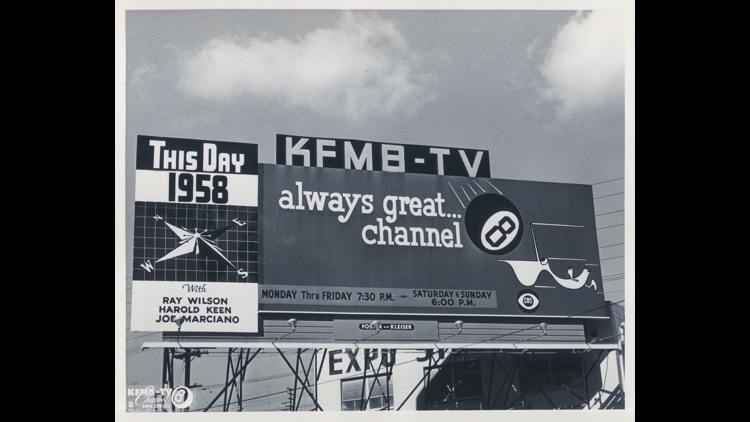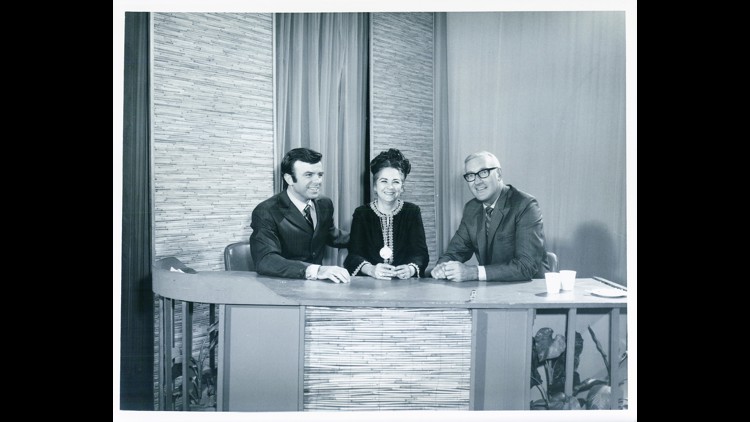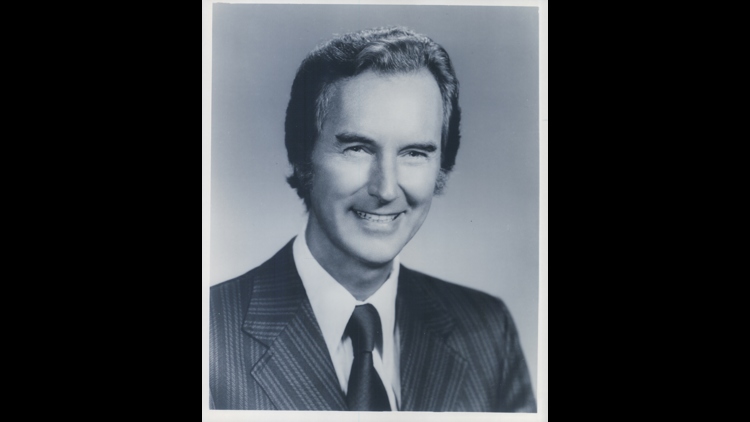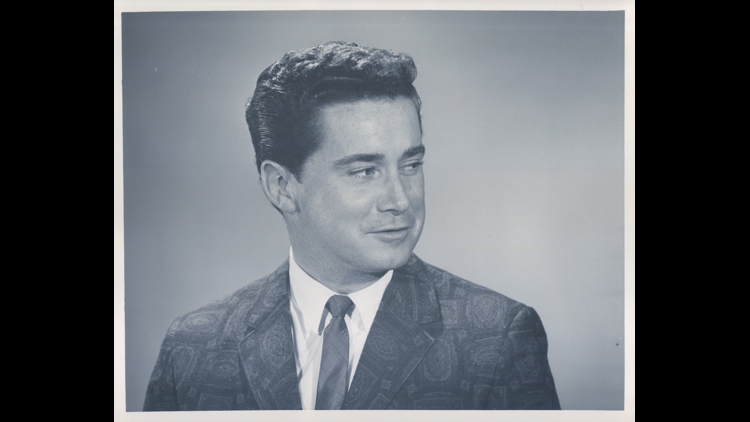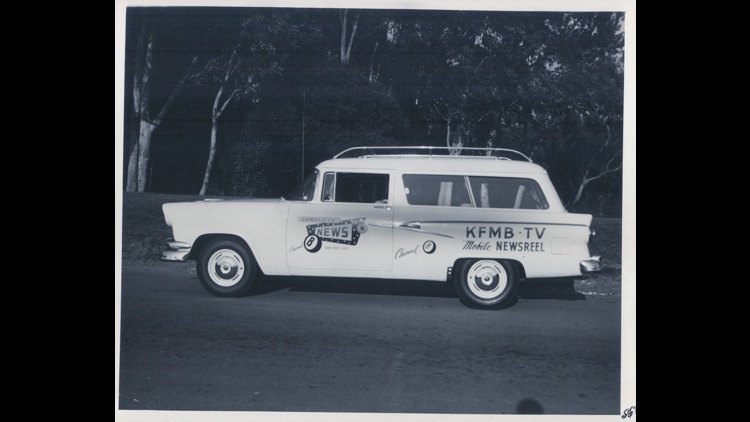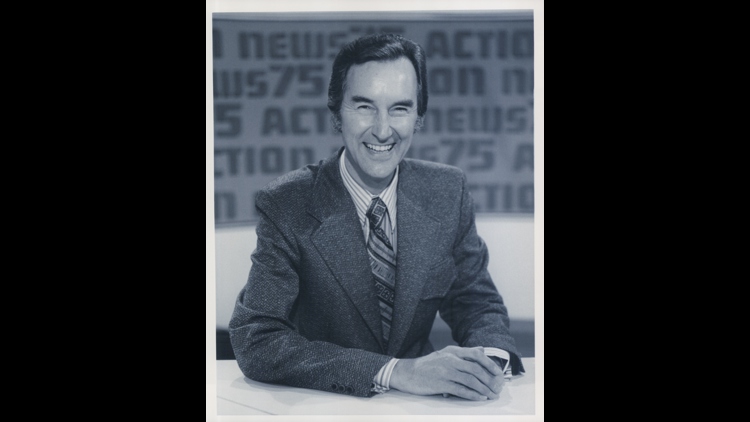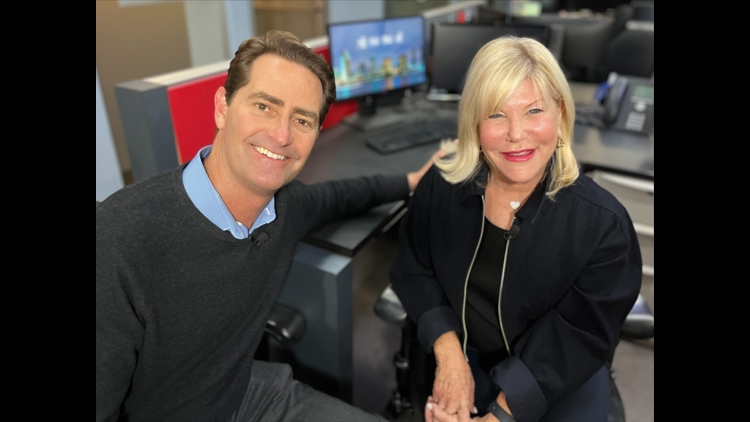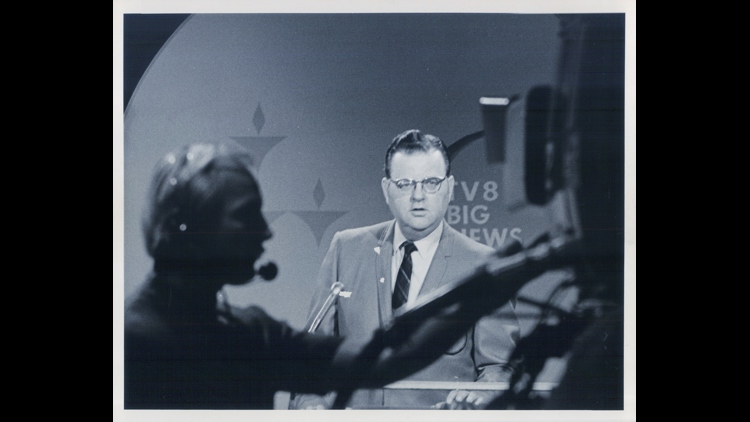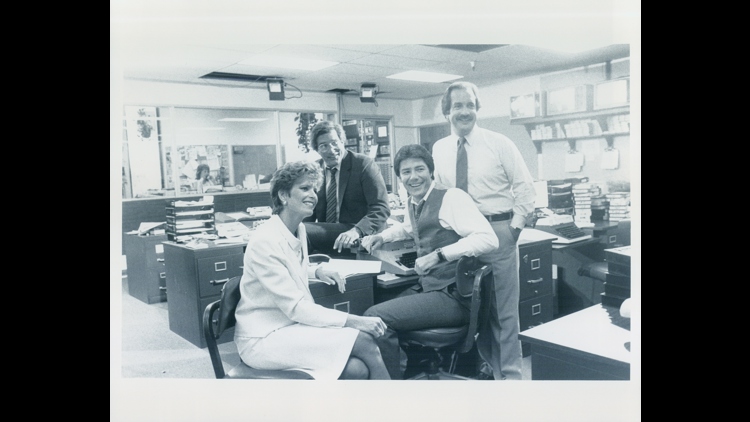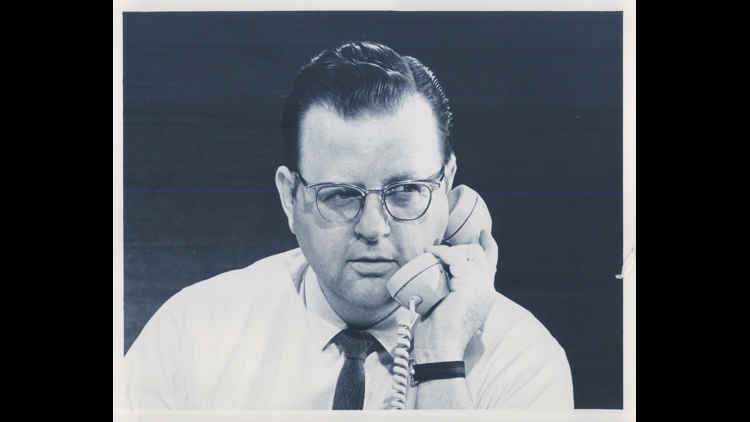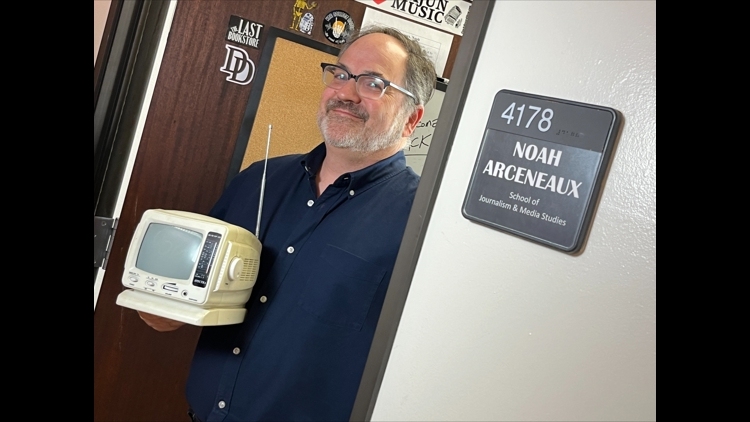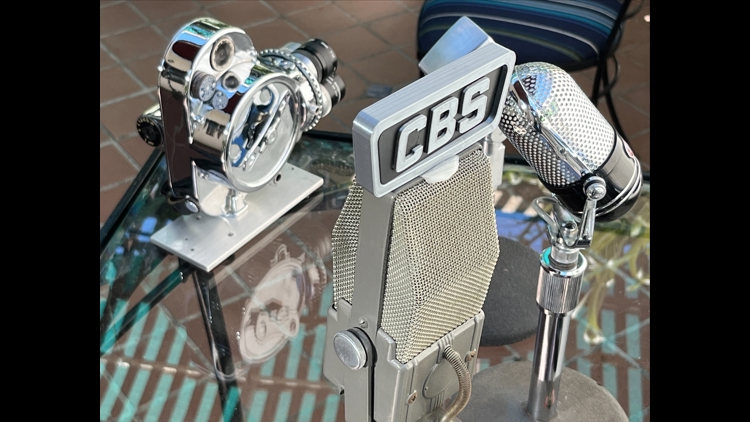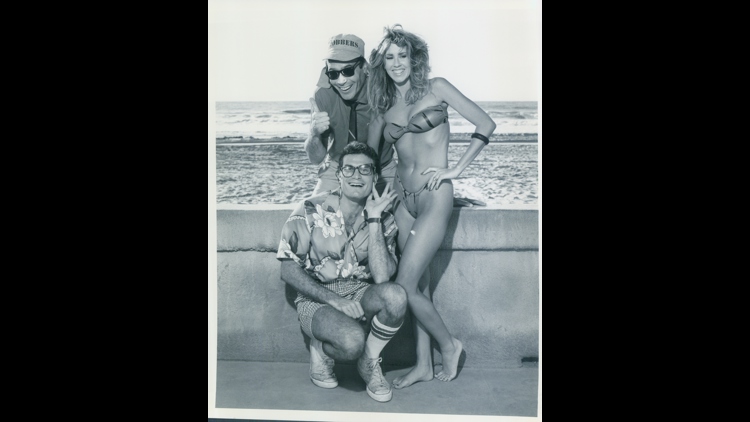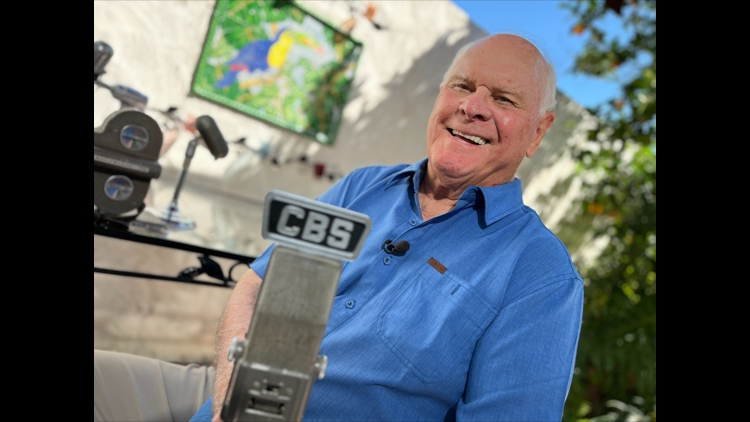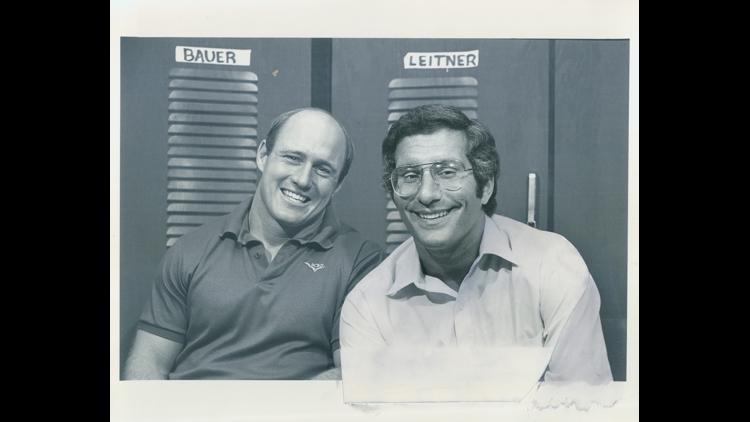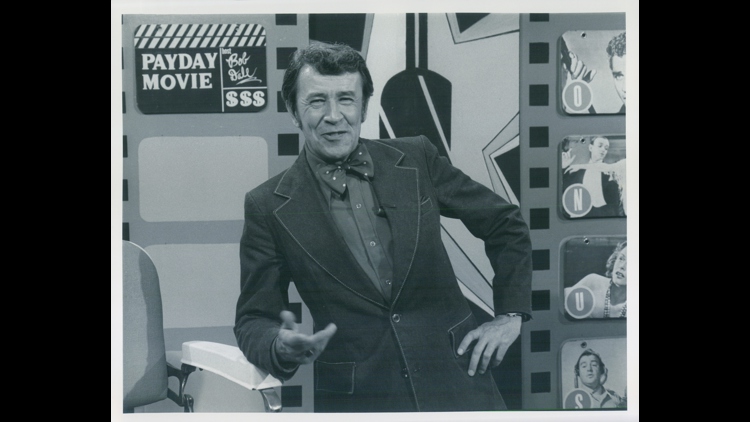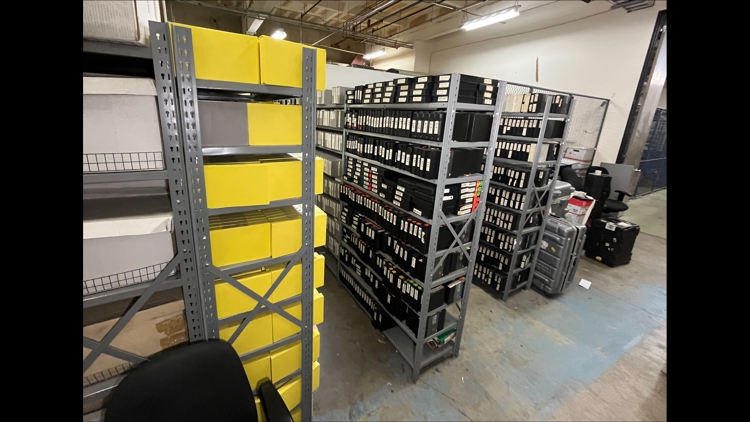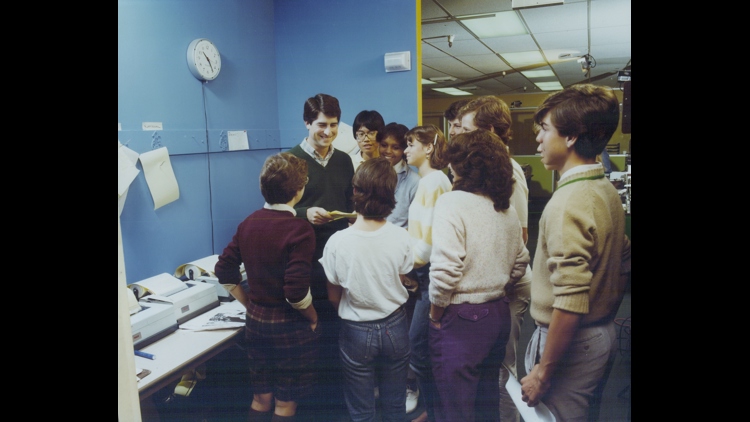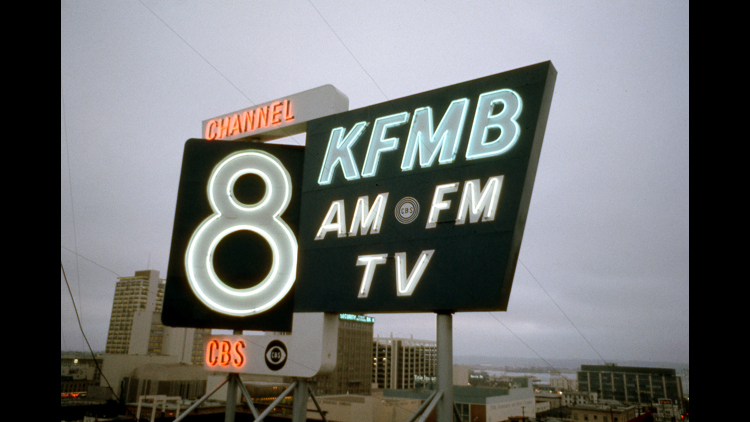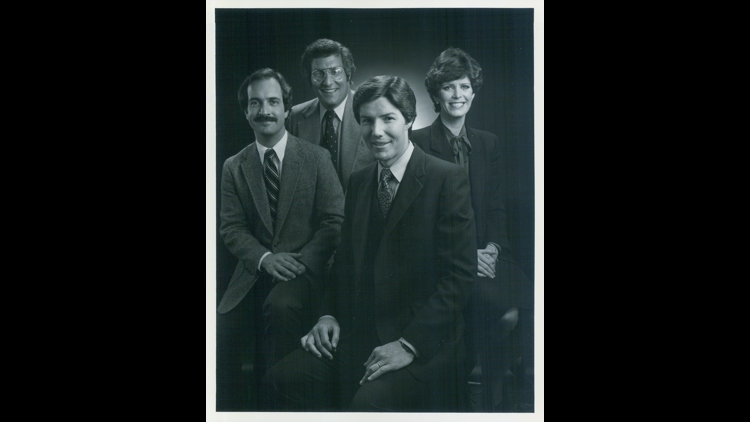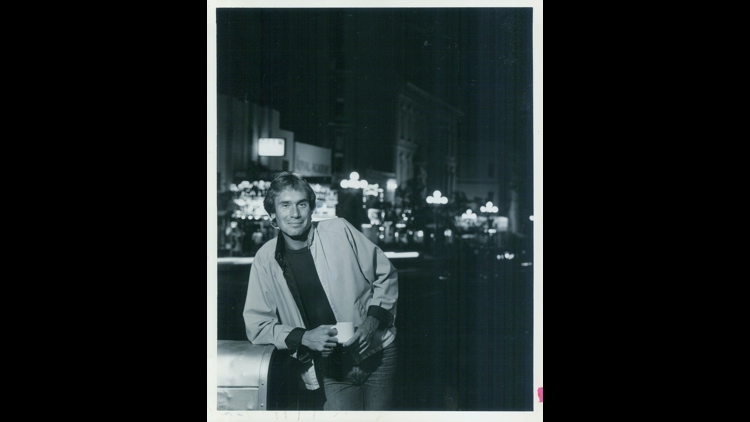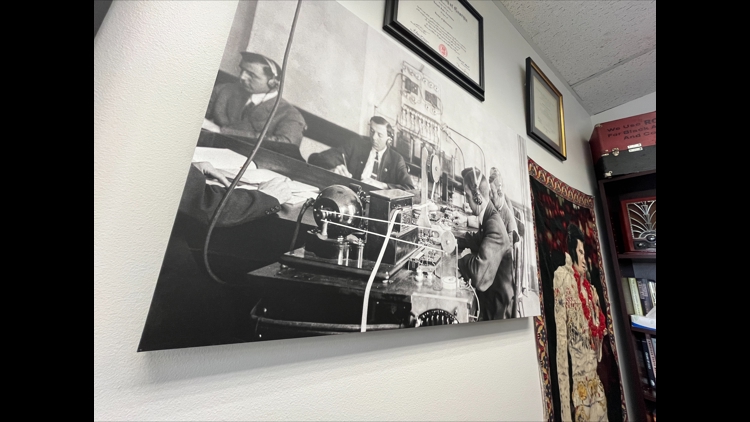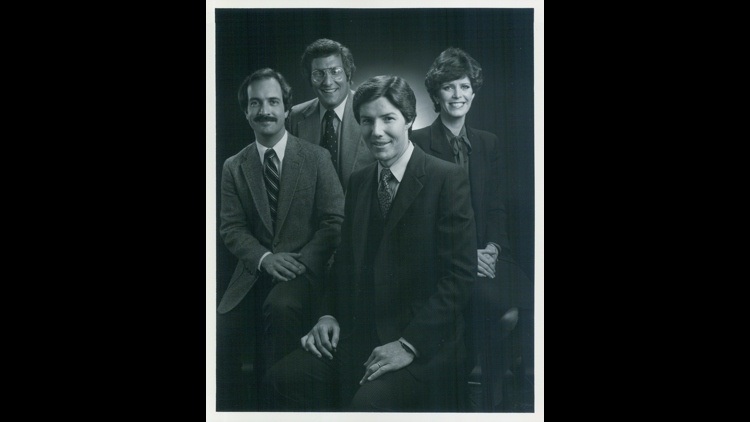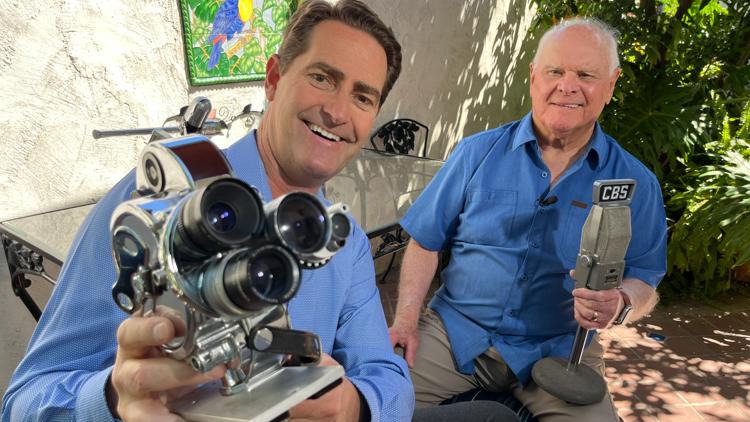SAN DIEGO — May 16 is a special day at CBS 8 and for San Diego. We've been counting down the months as we celebrate our 75th Anniversary on May 16, exactly 75 years to the day when we delivered the first-ever television broadcast in 1949.
In this Zevely Zone, I take a look back at the rich broadcasting history as CBS 8 expresses our deep gratitude to San Diegans for their loyal viewership.
As we celebrate 75 Years, you may have heard people say the first one through the wall can get battered and bruised. It takes courage to be the first to do something special. Imagine how the Wright Brothers felt when they took that first flight. Would they fly high or crash and burn? In some small way, that must have been how engineers at CBS 8 felt in 1949 when they took a leap of faith and then delivered the first television station in San Diego.

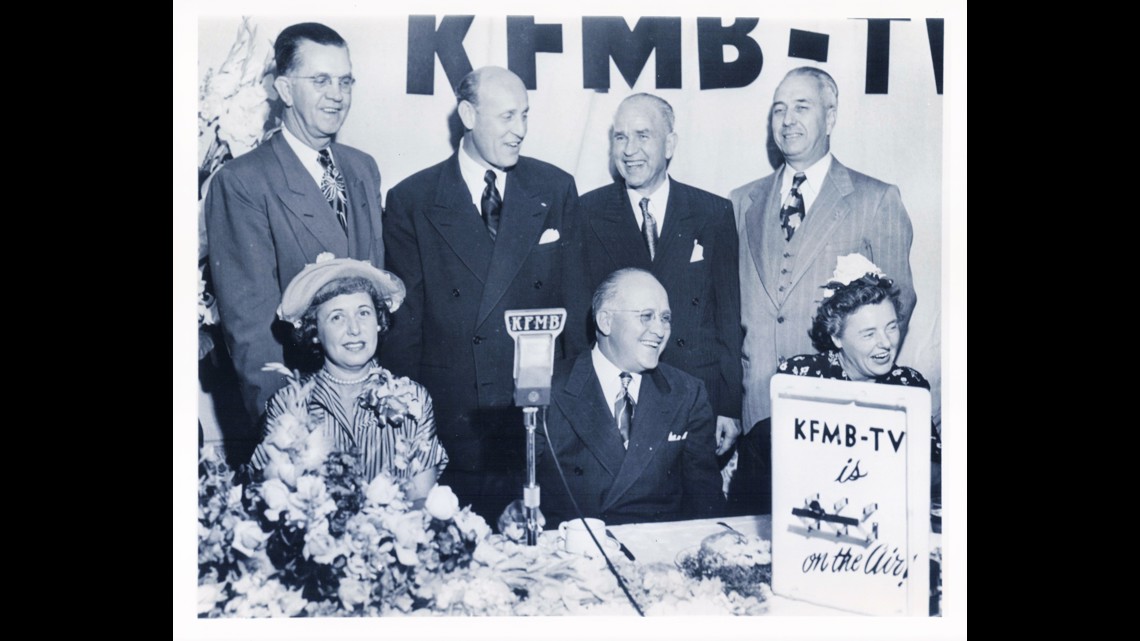
On May 16, 1949, the CBS 8 transmitter on Mount Soledad started delivering television to San Diegans for the first time.
CBS 8 engineers must have been feeling the pressure. "Absolutely, absolutely," said Professor Noah Arceneaux. The Professor of Media Studies at San Diego State University showed us what a tiny screen looked like back then in a new world that was still very experimental.
"Admiral television 1949," said Professor Arceneaux. "I think people were amazed, however, the video quality was rather poor. The images were black and white."

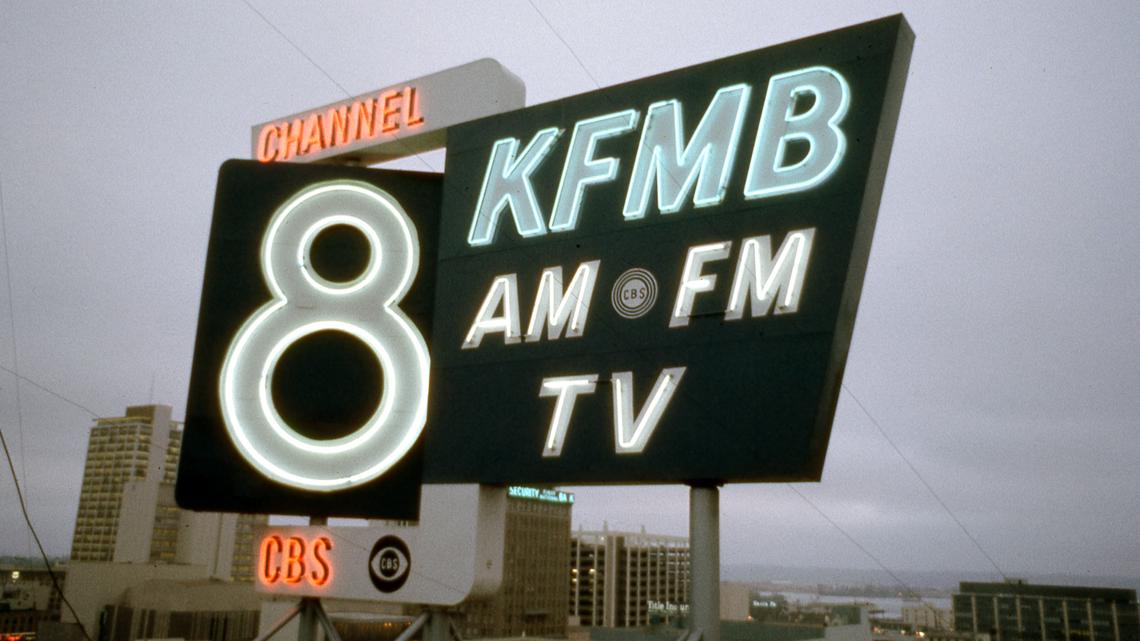
From the CBS 8 weather woman, later known as Rachael Welch, to SunUp, hosted by Bob Mills and Zoorama, hosted by Bob Dale, CBS 8 had a reputation for hiring talented broadcasters such as Harold Keen and longtime anchor Ray Wilson.
"Good evening these are the world headlines at this hour," said Wilson in archive footage as he informed San Diegans.
"They were the TV station in town," said longtime CBS 8 photojournalist Carl Gilman who showed us file video of his time at CBS 8 between 1964 and 1975.
"This is it, Channel 8 on the move. That's me at Balboa Park," said Carl who was wearing a gold blazer in the shot. "The station wanted you to look the part," said Carl. "We were to wear that everywhere, including forest fires and bank robberies."

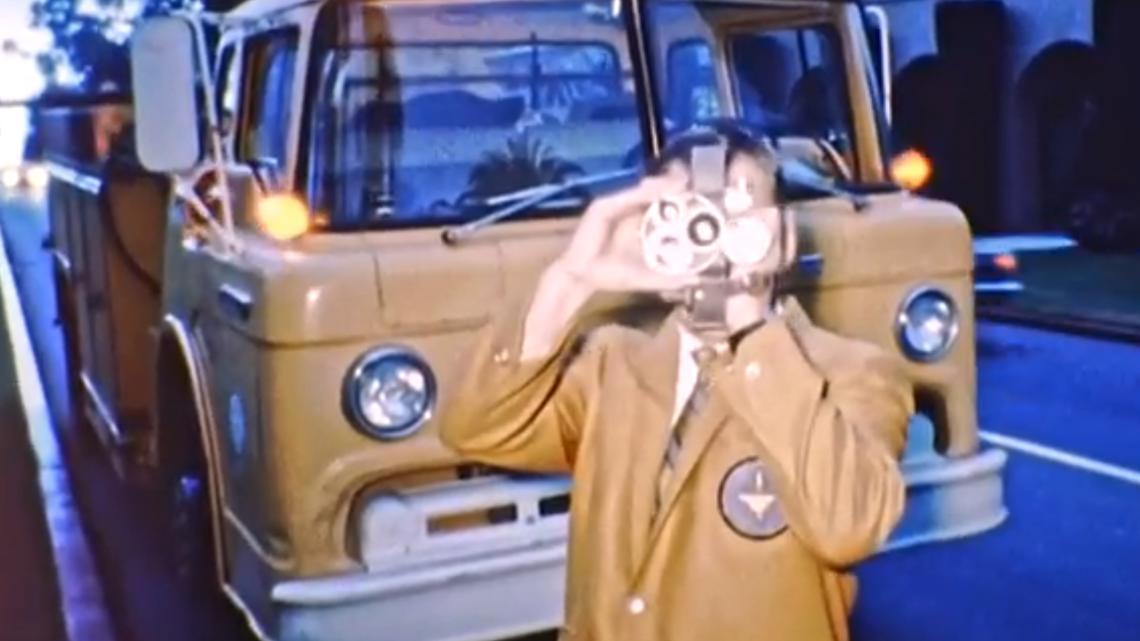
In 1965, Carl risked his life at the Hub Pawnshop shootout following a botched robbery in the Gaslamp Quarter. "Channel 8 kicked into action and we got right up in there and in those days the police would let you right in there and everything," said Carl. "Yes, bullets flying and everything."
Carl recalls the CBS 8 newsroom kicking into high gear that day. "I remember, what sticks in my mind is coming back to the newsroom and the entire newsroom drops everything they're doing because this is now a national story, it's a big deal," said Carl.
Owning the big story has been a CBS 8 trademark since the beginning and we've had the best in the business do it. Inside our archive footage vault, CBS 8 has thousands of canisters of film and videotape. That's where you'll find a wall of fame with the work of Barbara Lee Edwards, Michael Tuck, Shawn Styles, Steve Price, Larry Himmel and John Culea, who we thought it would be fun to track down.

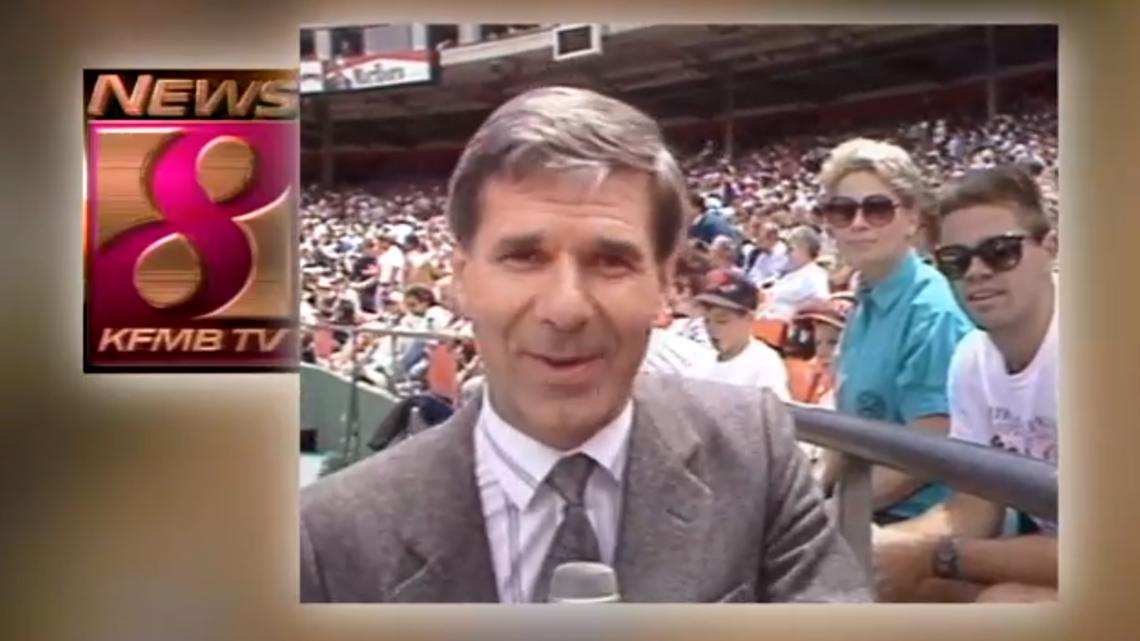
"We live in East Texas," said John Culea who was a CBS 8 reporter in the 80's and 90's. John told us about his favorite story of all time.
"Without a doubt, it was the comeback of Dave Dravecky," said John. We pulled that story from the archives and watched John's report. "Dave Dravecky's nightmare began with a cancerous tumor removed from his left arm last October never mind baseball his life was threatened," said John in 1989. Former Padres pitcher Dave Dravecky was then playing for the Giants and pitching his first game following the removal of a cancer tumor in his left arm. "Dave Dravecky pitching without half of the muscle in his left arm," said John in 1989. "Three up three down, no runs, no hits, no errors, if I'm dreaming don't wake me."
"It was wonderful. He went 8 innings, he got the win and it was brilliant, it was exhilarating," said John via Zoom from his Texas home.
In the 1970's and 80's, news director Jim Holtzman reimagined CBS 8 by assembling a dream team of talent. As San Diego grew, so did our staff. "There was a lot going on, we did two stories a day," said former CBS 8 reporter Lorraine Kimel. Lorraine worked for CBS 8 from 1982 to 1993. When she visited our newsroom for this interview she still recognized some friendly faces.
Longtime assignment editor Mario Escovedo tried to put her back to work. "We still got a couple of hours until the six," said Mario. Lorraine didn't blink, "I tell you what, I could fill it!" she said.
We pulled archive footage of Kimel's time on air. "Rabbit hair sweaters were very big in those days," she laughed. Kimel was known for her passion and personality.
We then watched footage of her reporting from sea. "I threw up three times covering the Star of India sailing. Three times!" she said.

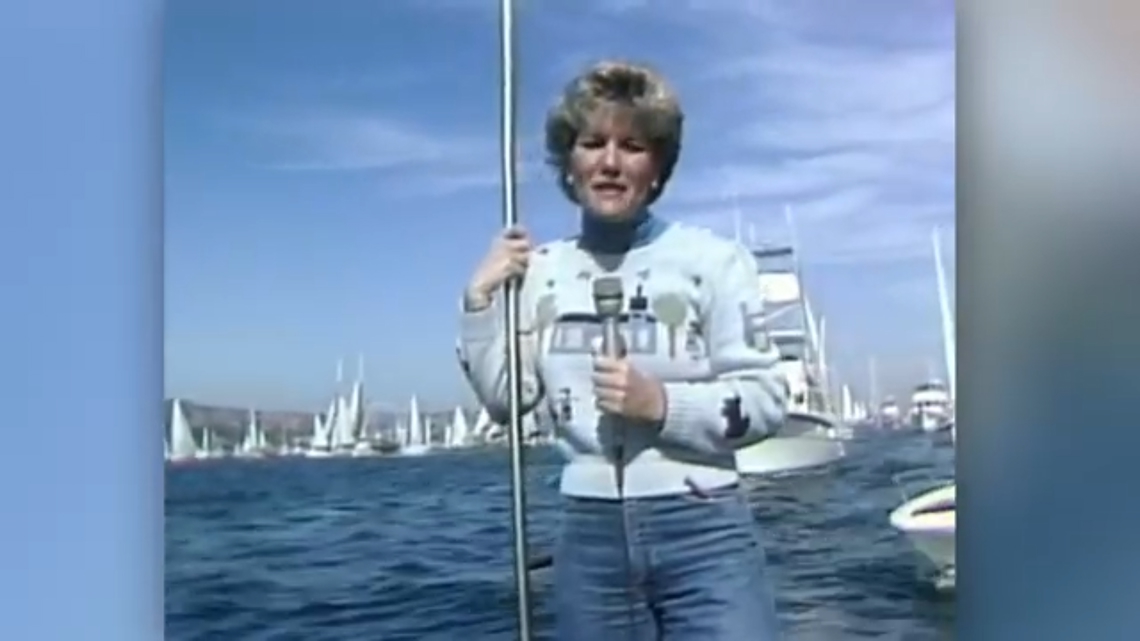
Her most memorable story was shot in 1985 at Edwards Air Force Base when she said, "You might think that this being the 17th Space Shuttle mission people might be getting a bit blasé by now but it appears that pure romance with the Space Shuttle is as passionate as ever."
Nine months before the Challenger tragedy, Lorraine and thousands of others watched one of its last successful landings. "It keeps coming closer and closer and you have no idea what it is and then all of a sudden you see this massive hunk of hardware and you [realize] that thing was out there," said Lorraine.
Throughout the decades, from patriotic parades to heartwarming homecomings, CBS 8 covered this military town and its deep love for servicemembers and sports.
"You can hang a star on that one baby," said Hall of Fame Broadcaster Jerry Coleman when the Padres won the National League pennant in 1984. From the highs when the Padres went to the World Series, to the lows when we felt as if the world was ending during wildfires; CBS 8 shared our most vulnerable moments. "On any given day I would say welcome to my home but this is what is left of my home," said Larry Himmel in 2007 during the Witch Creek Fire.
There will always be an obligation to cover every story, big and small. "Cable television and streaming services don't have this public interest obligation, you know that there is an actual obligation for the over-the-air broadcasters to deliver news and information, educational programming, things about politics and I think that it's vital and it helps people keep informed," said Professor Arceneaux. "You go to broadcast television for news, weather, sports, traffic things like that you know like a fire or an earthquake. We need people who know what they are doing and have been trained to fact-check the information."


This is why, CBS 8 is driven with a responsibility to get it right. As the years pass our anchor teams, meteorologists, reporters and staff renew our oath to connect San Diegans with information you can trust.
"Really what the people of this city do is they let you into their homes," said Lorraine Kimel.
Carl Gilman added, "Why do we take it so seriously, every story we tell? Because it is."
So after 75 years of telling the stories of our community, we want to say: Thank you, San Diego!
CBS 8 has a tradition of being 'first' in San Diego. We were the first TV station to broadcast in color and the first to air multiple newscasts in day.
PHOTOS | History of CBS 8 / KFMB-TV in San Diego
PHOTOS | History of CBS 8 / KFMB-TV in San Diego
WATCH: The history of KFMB/CBS 8 in photos

